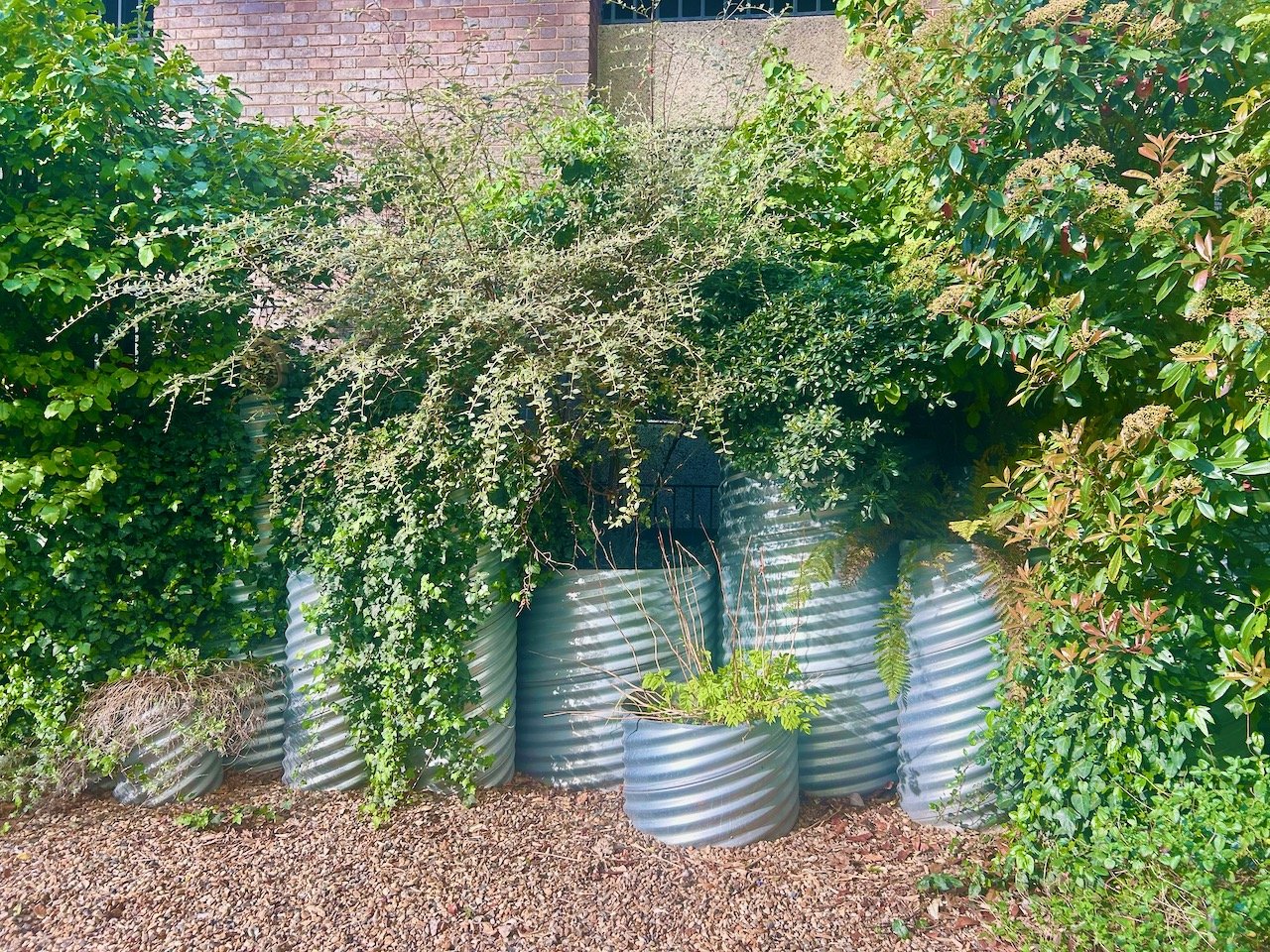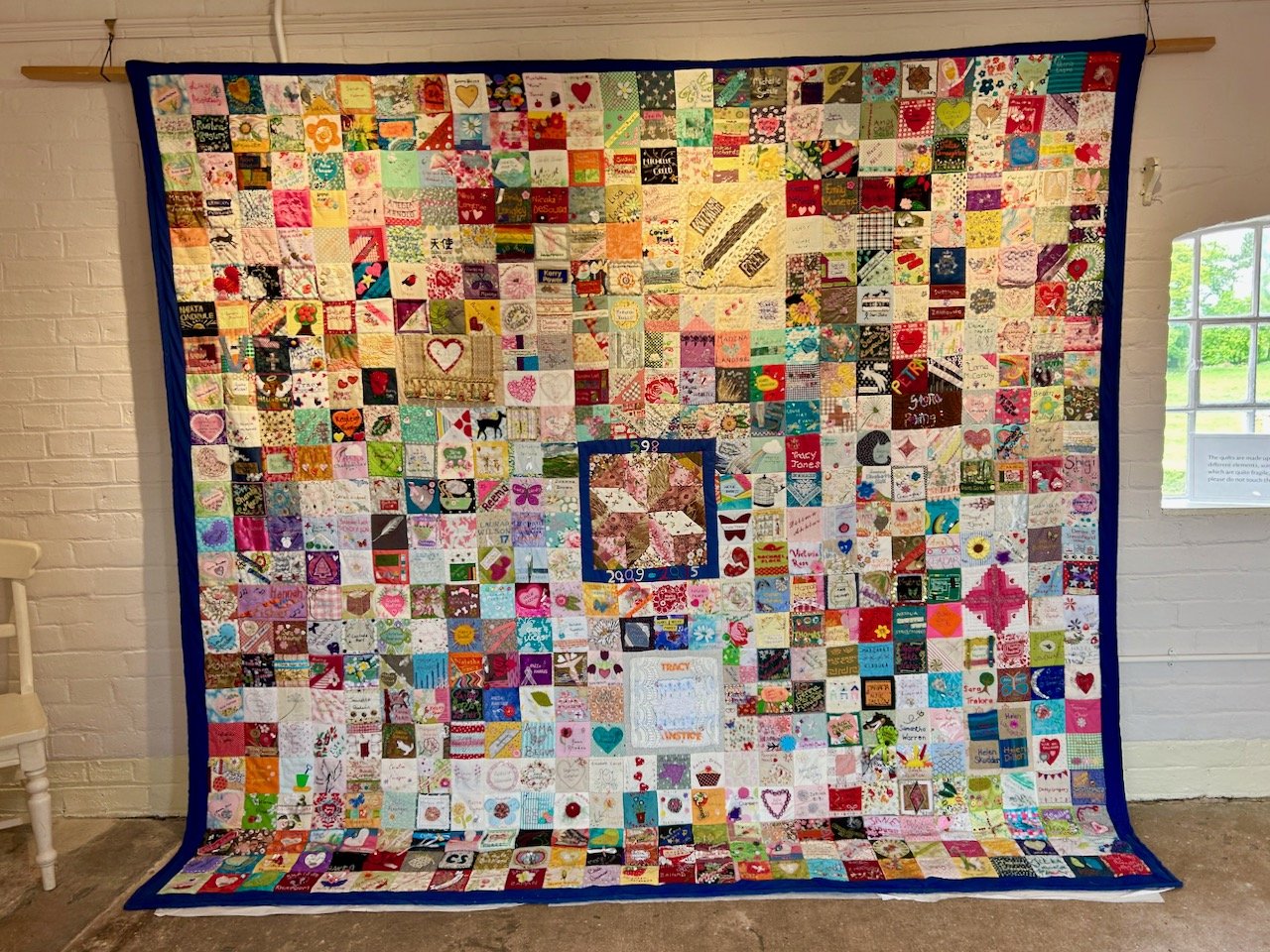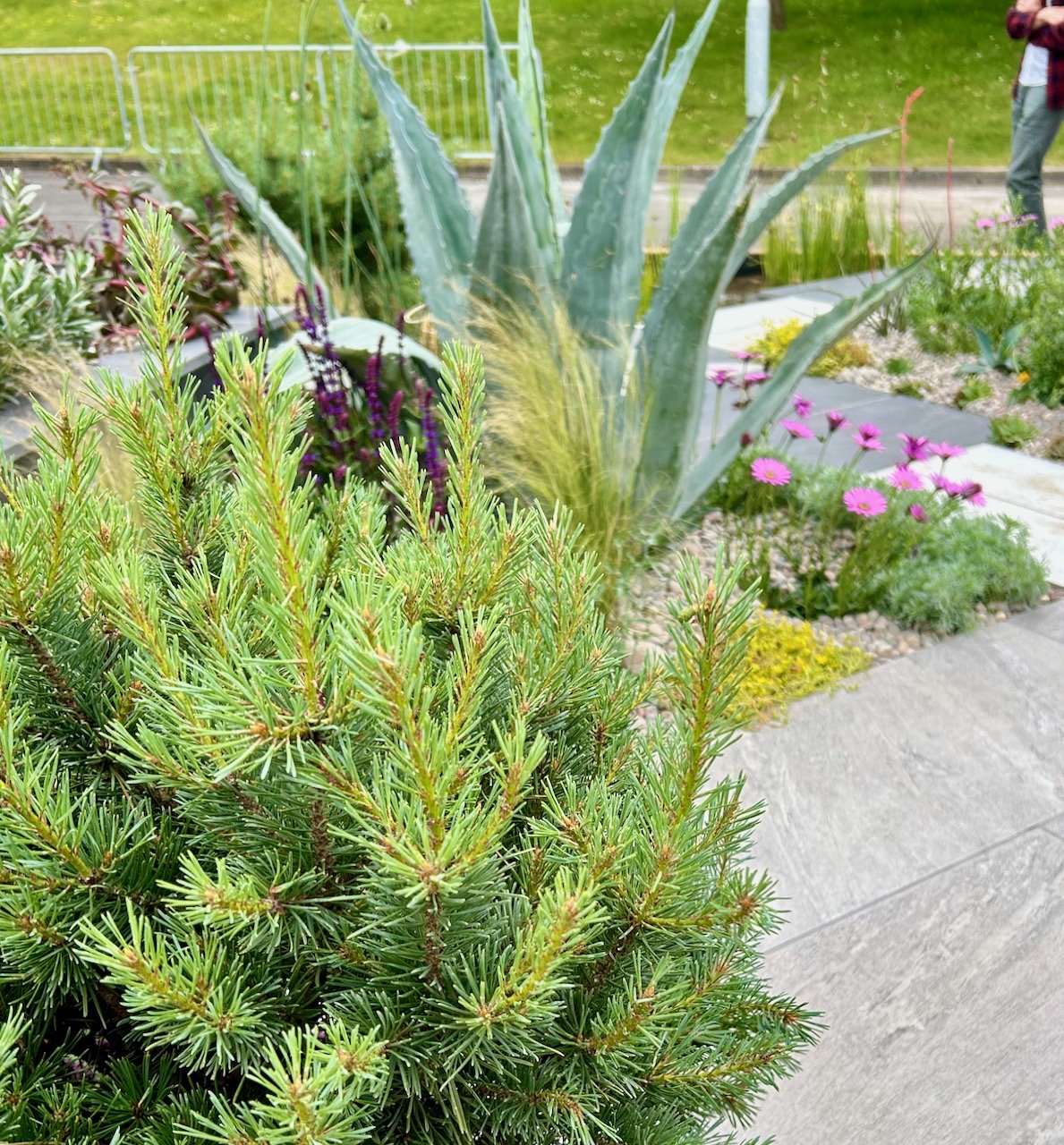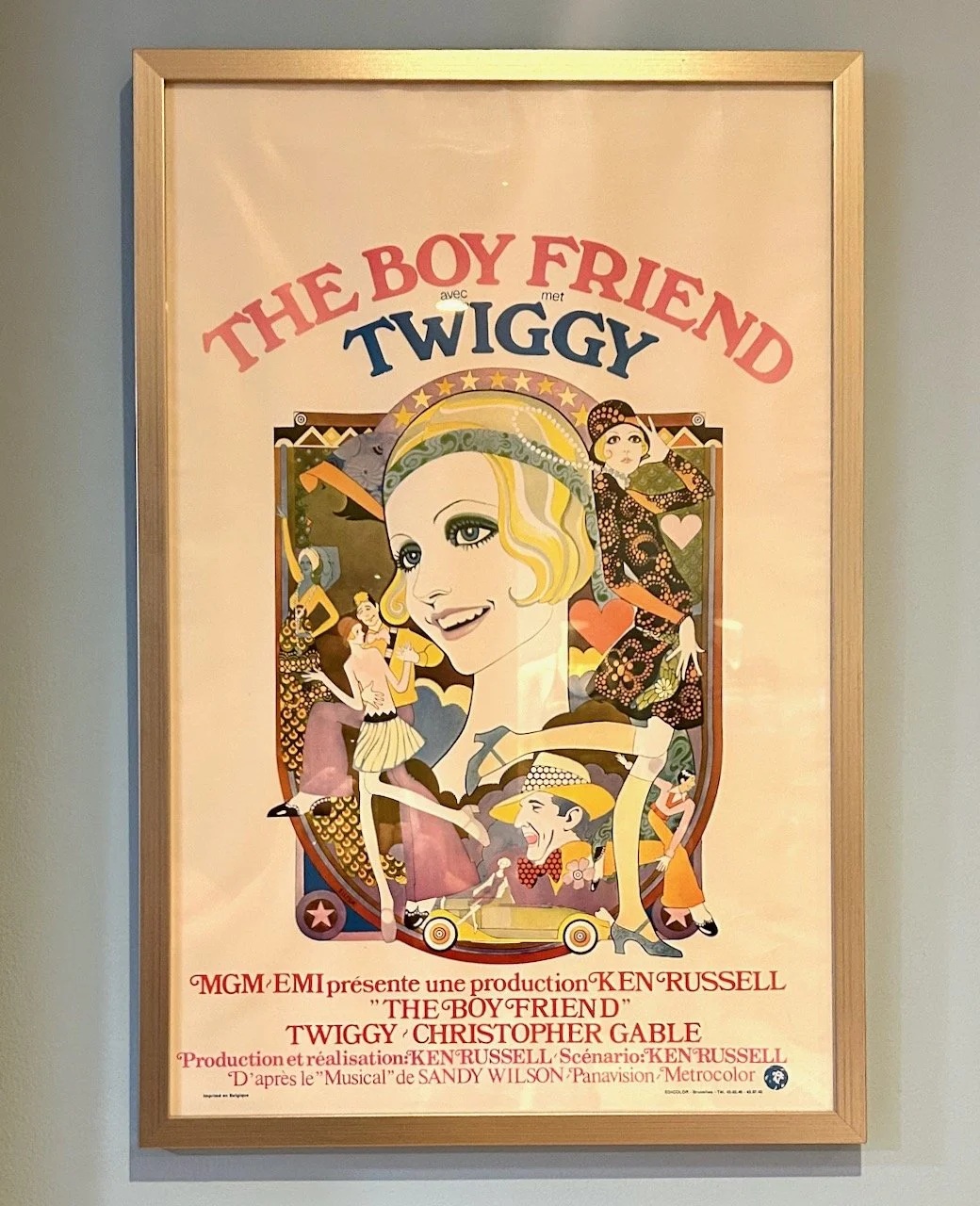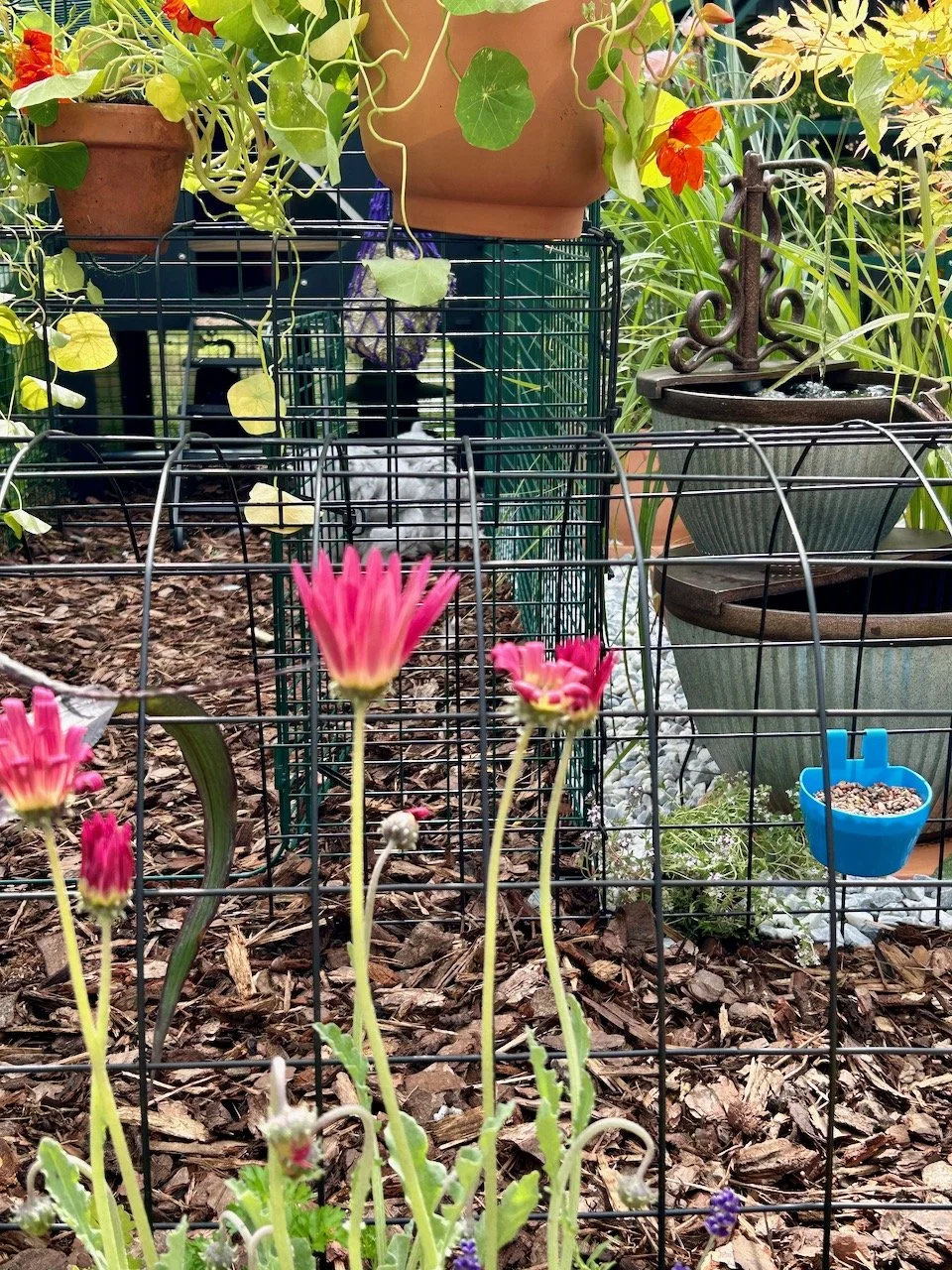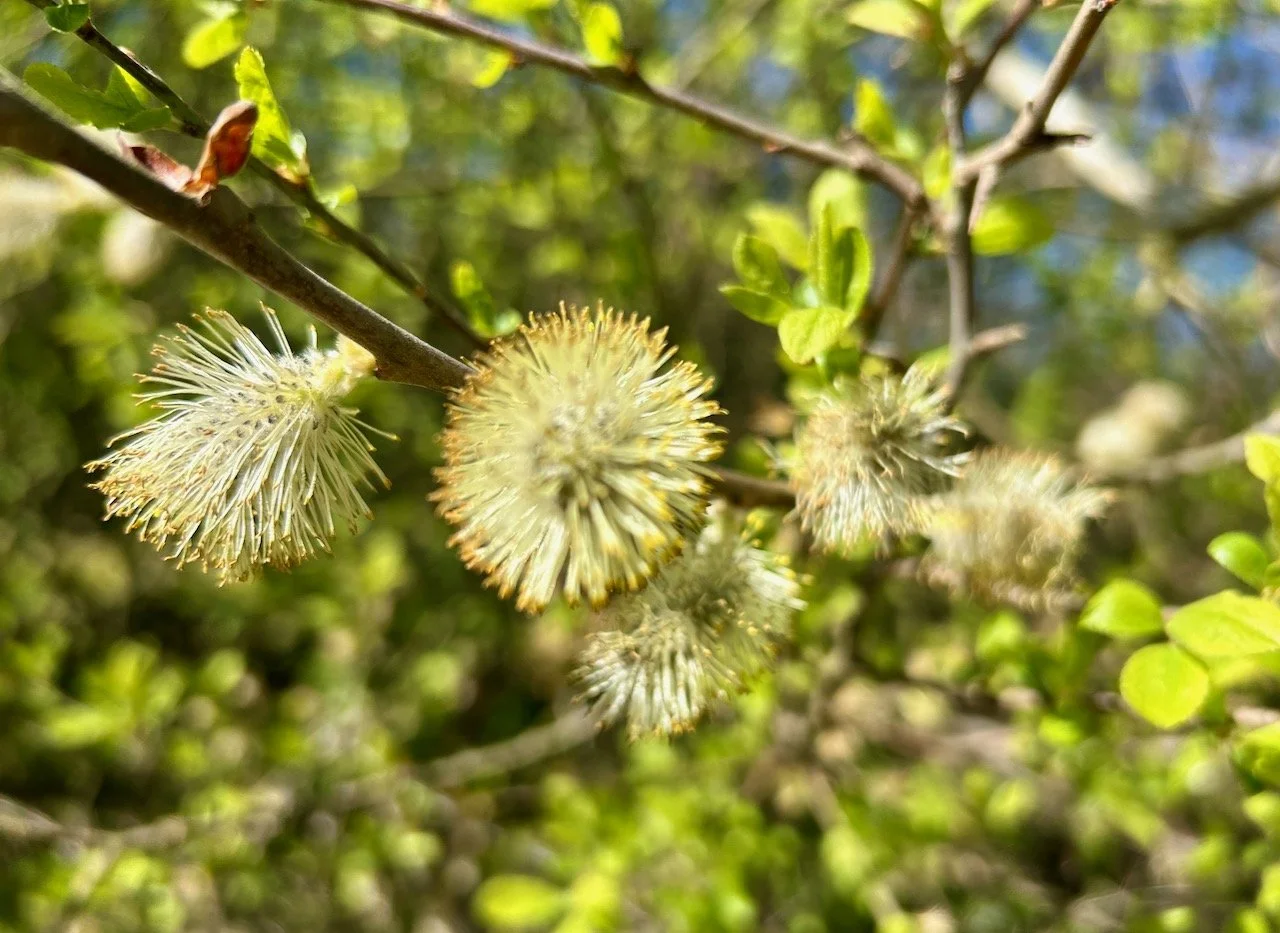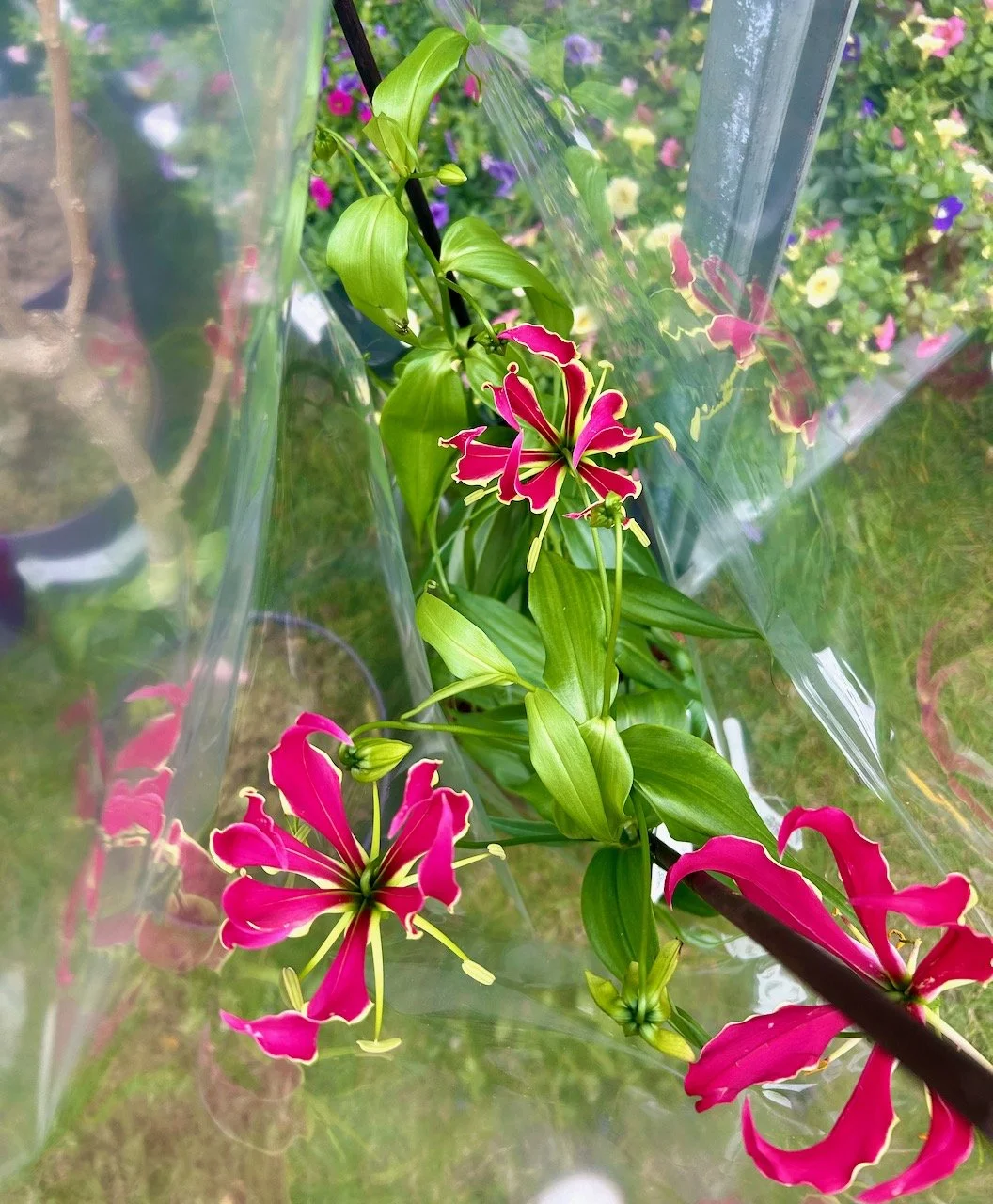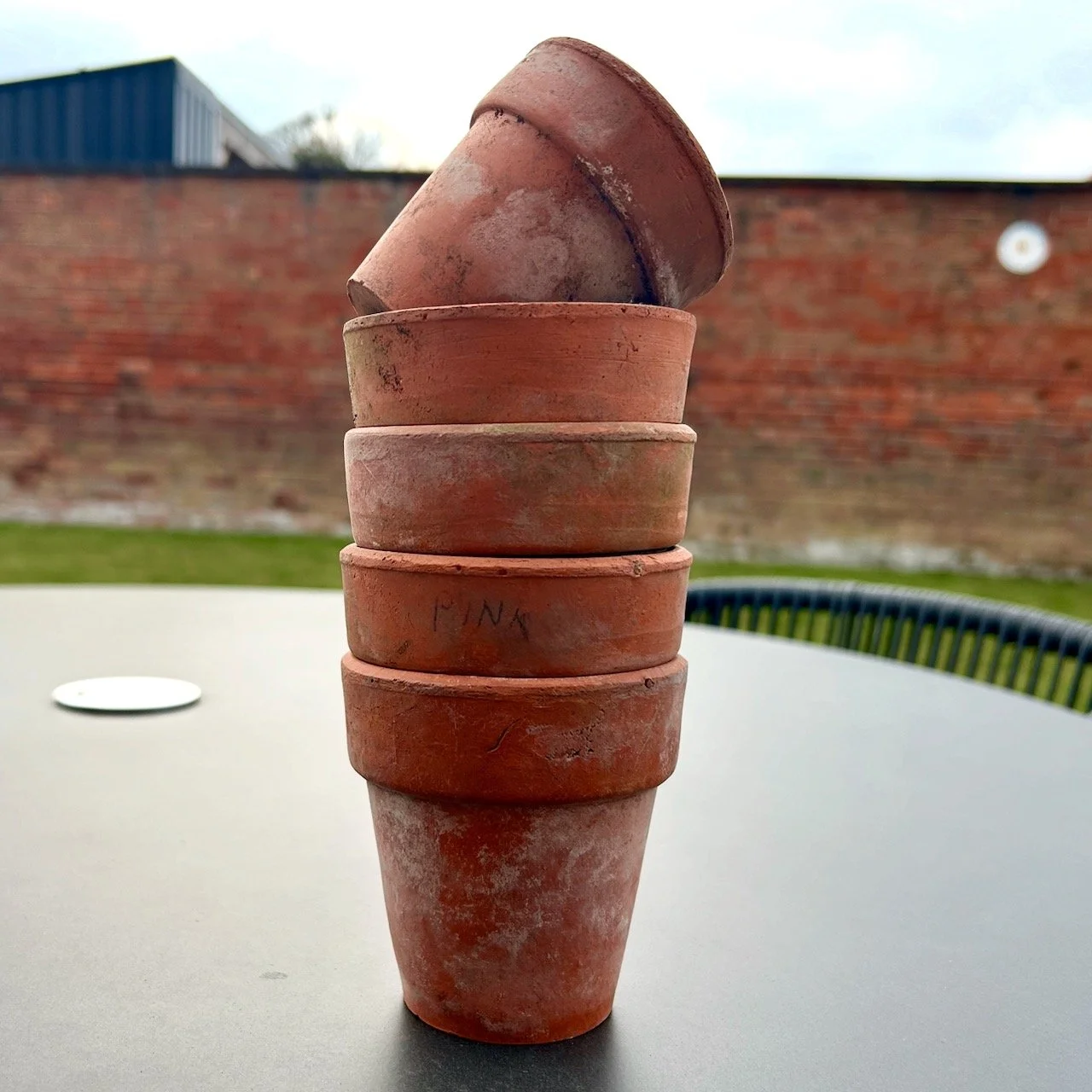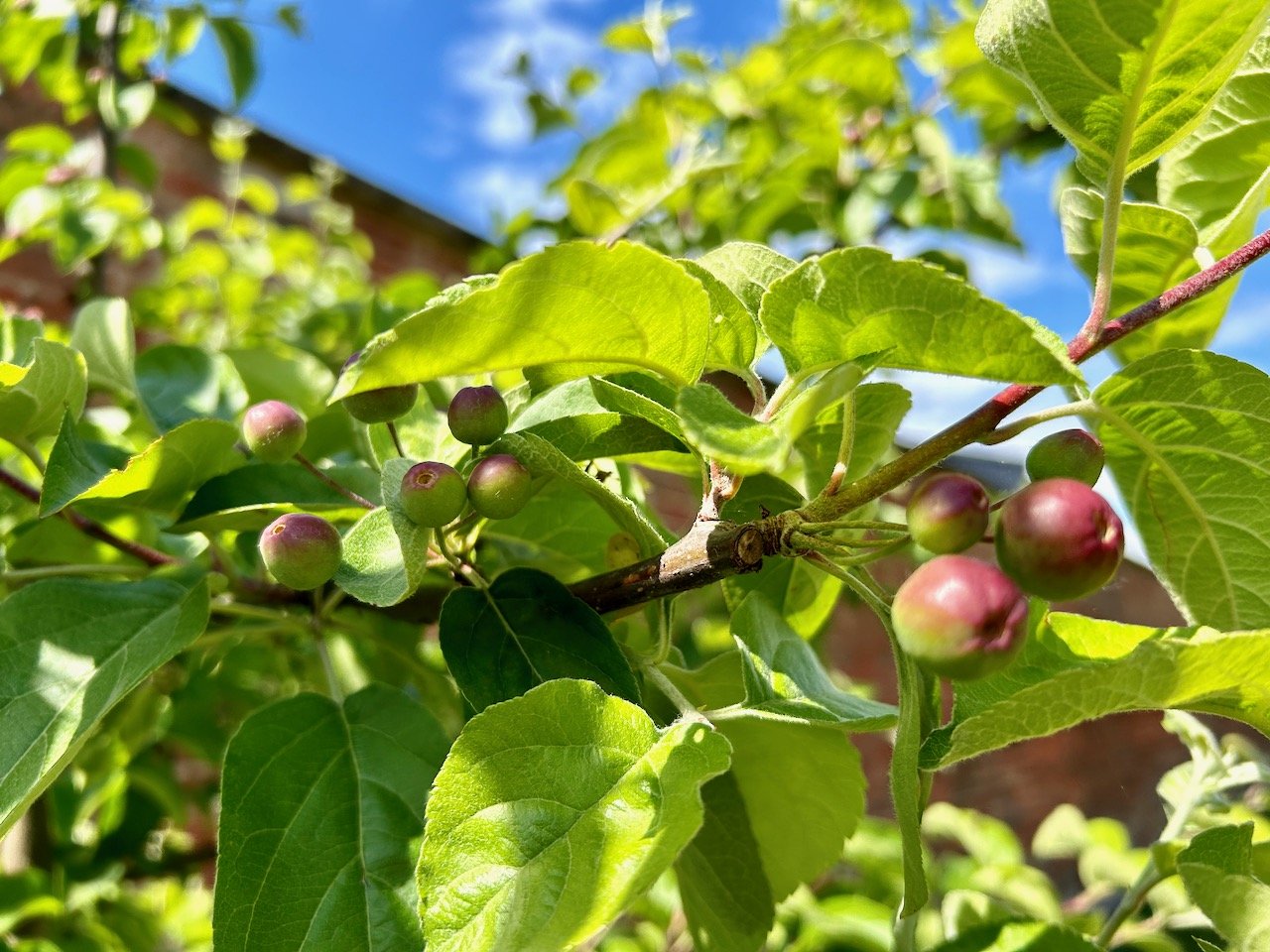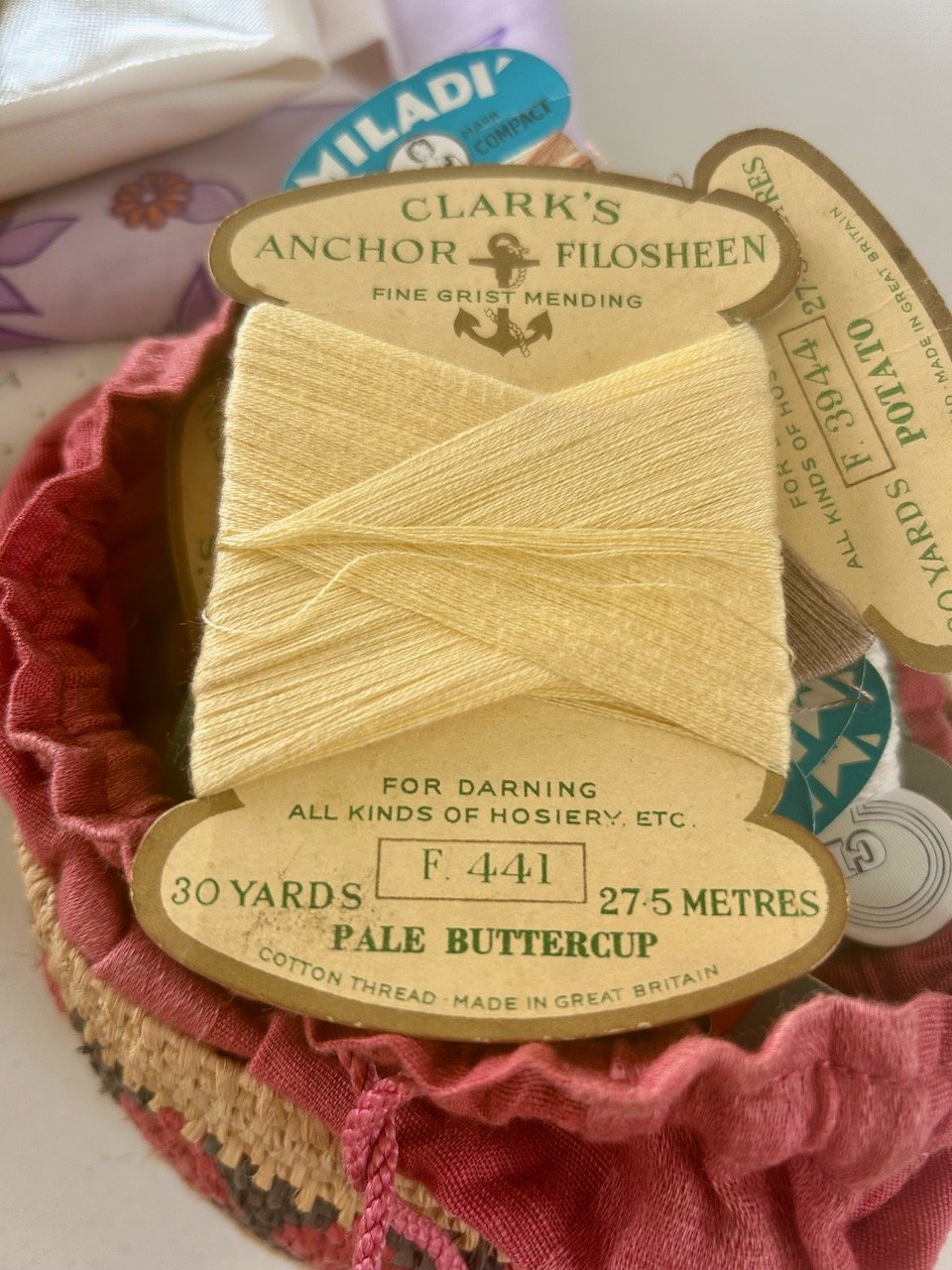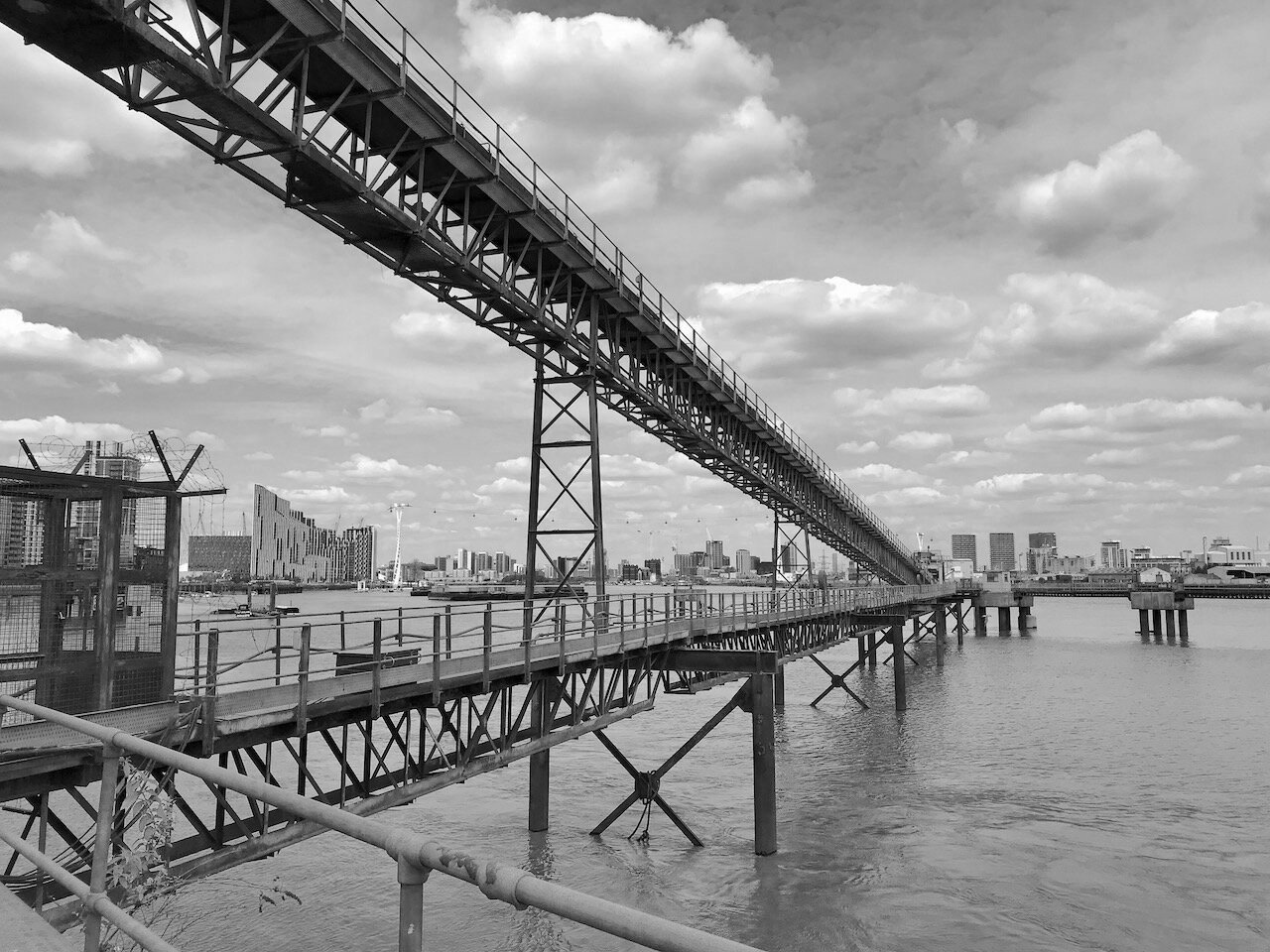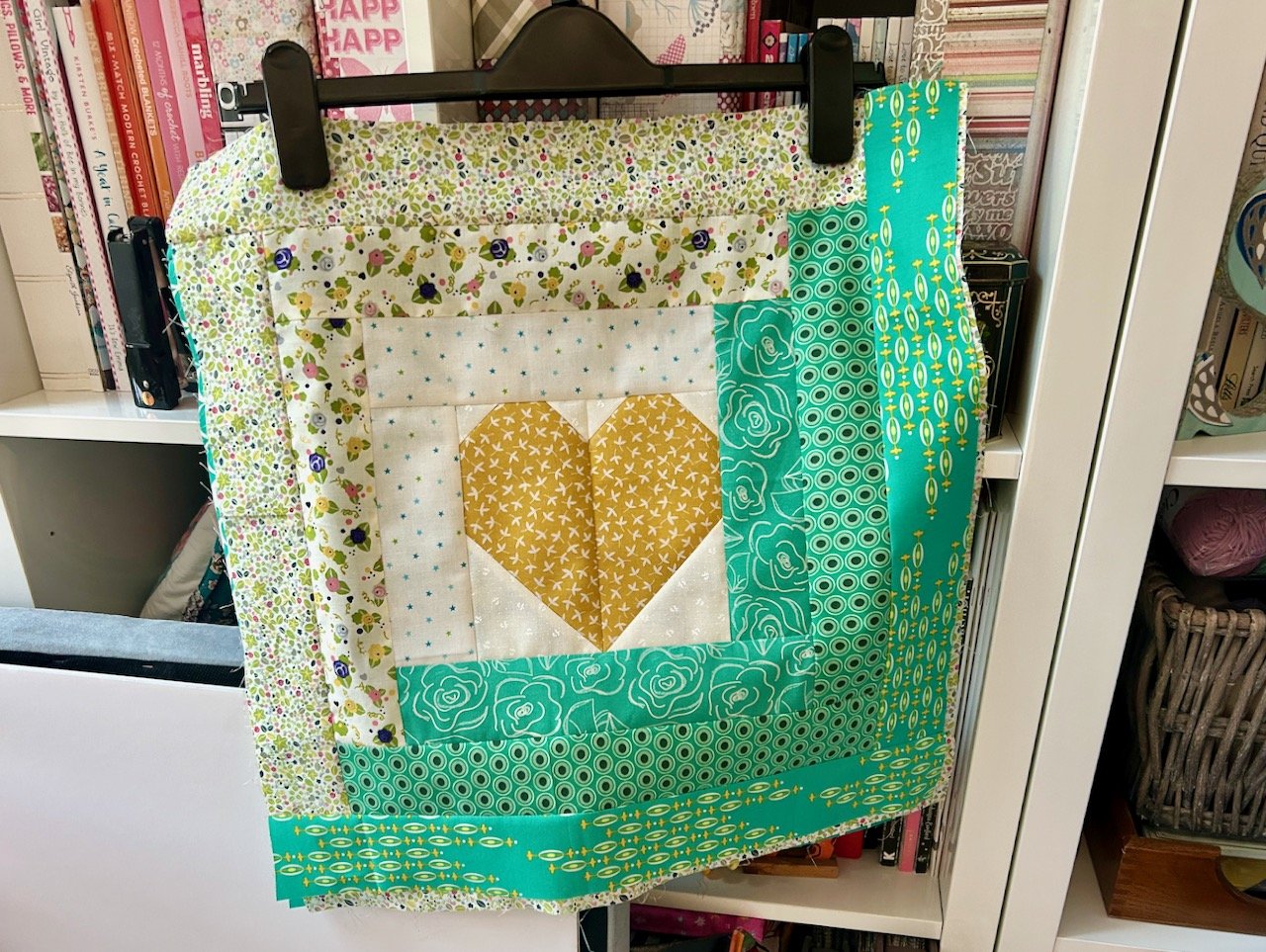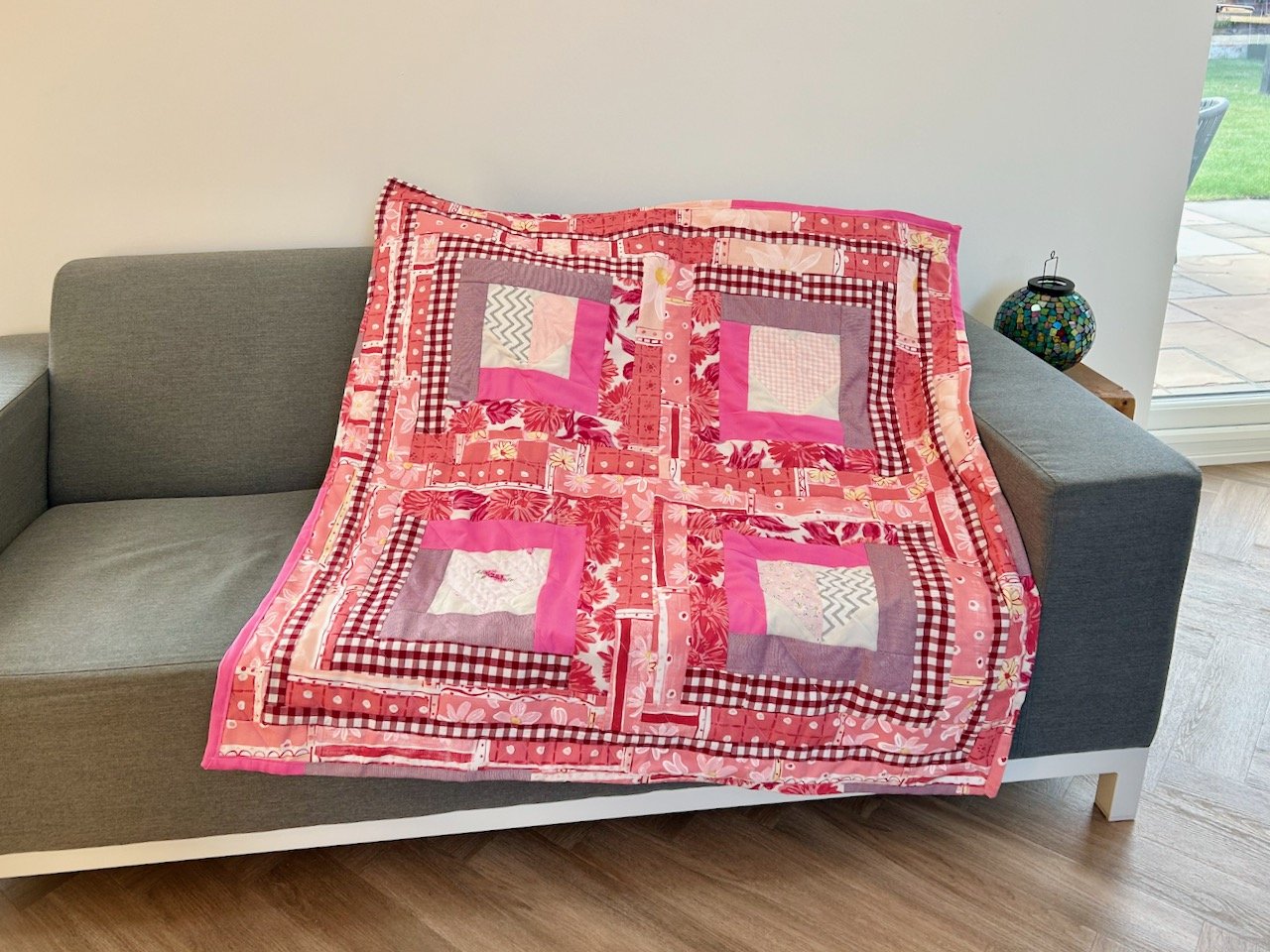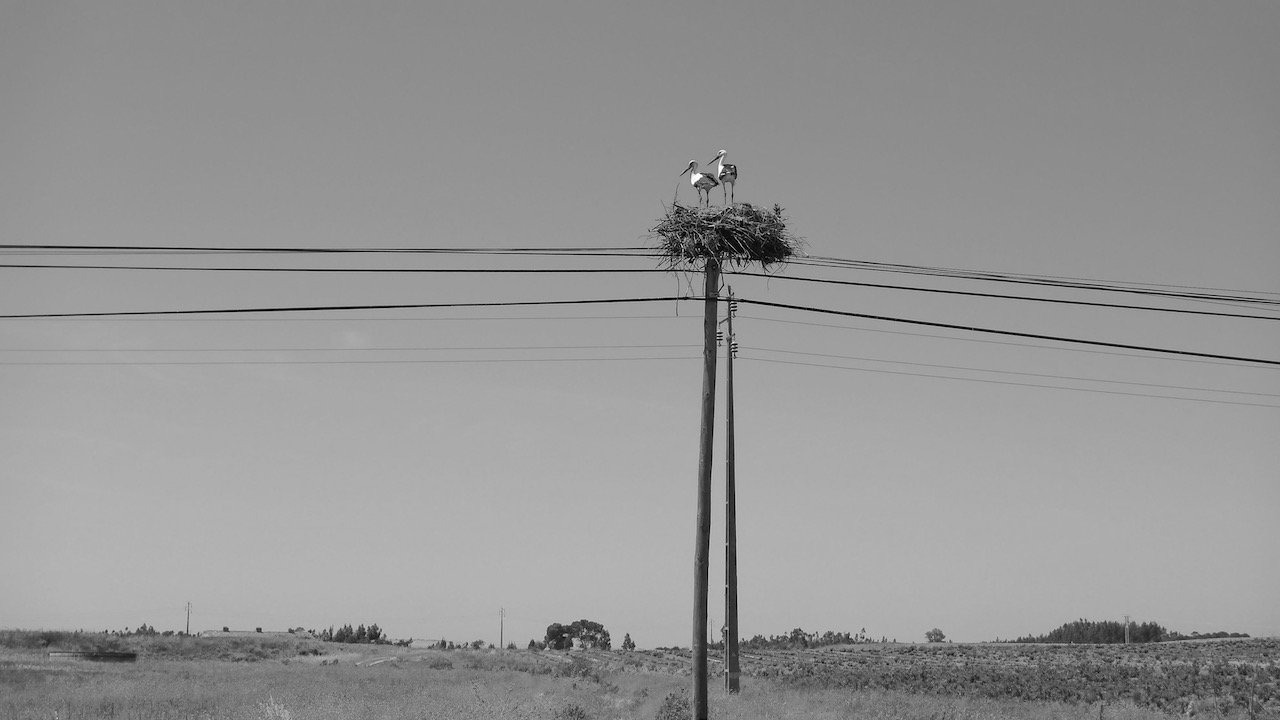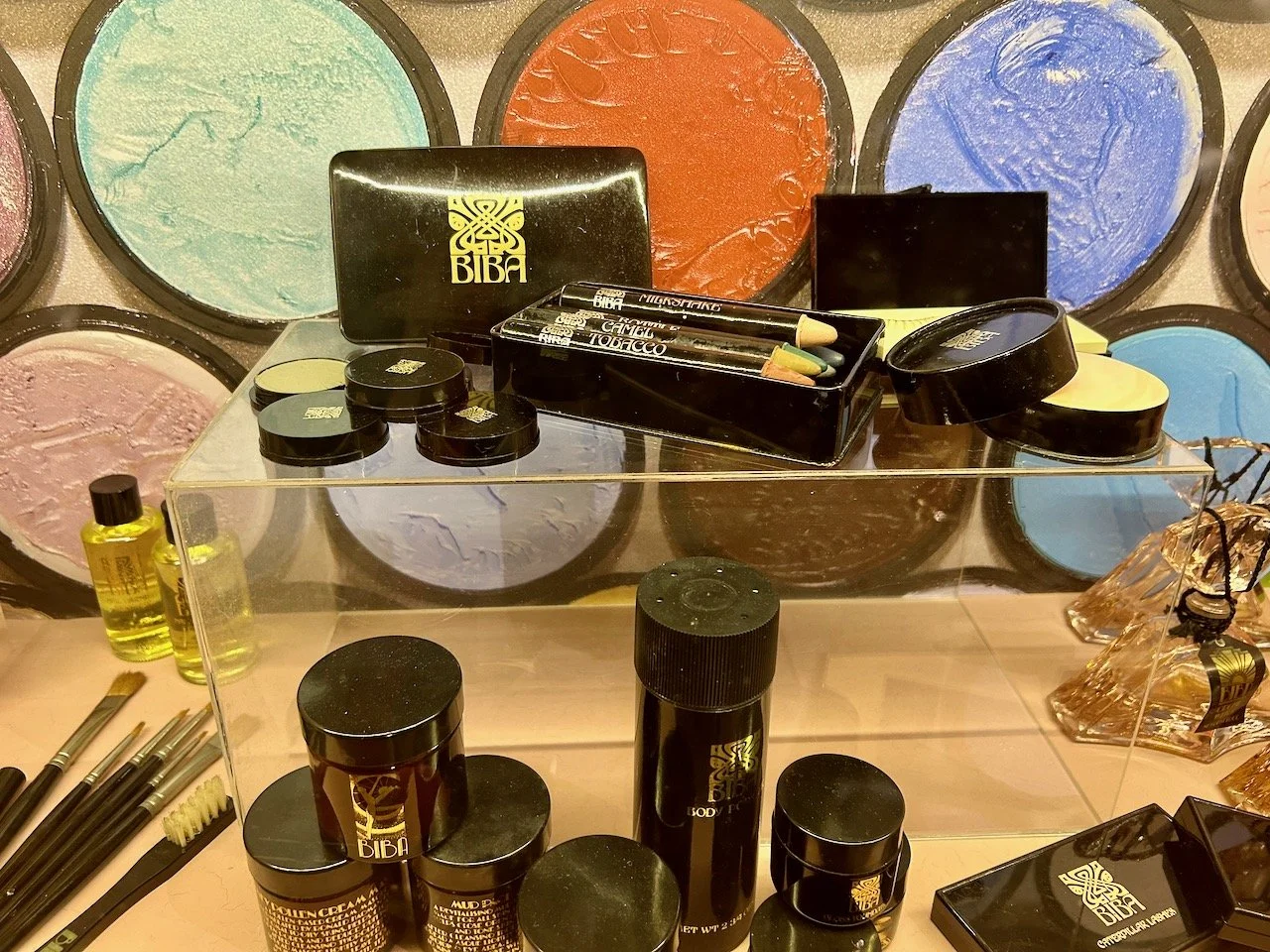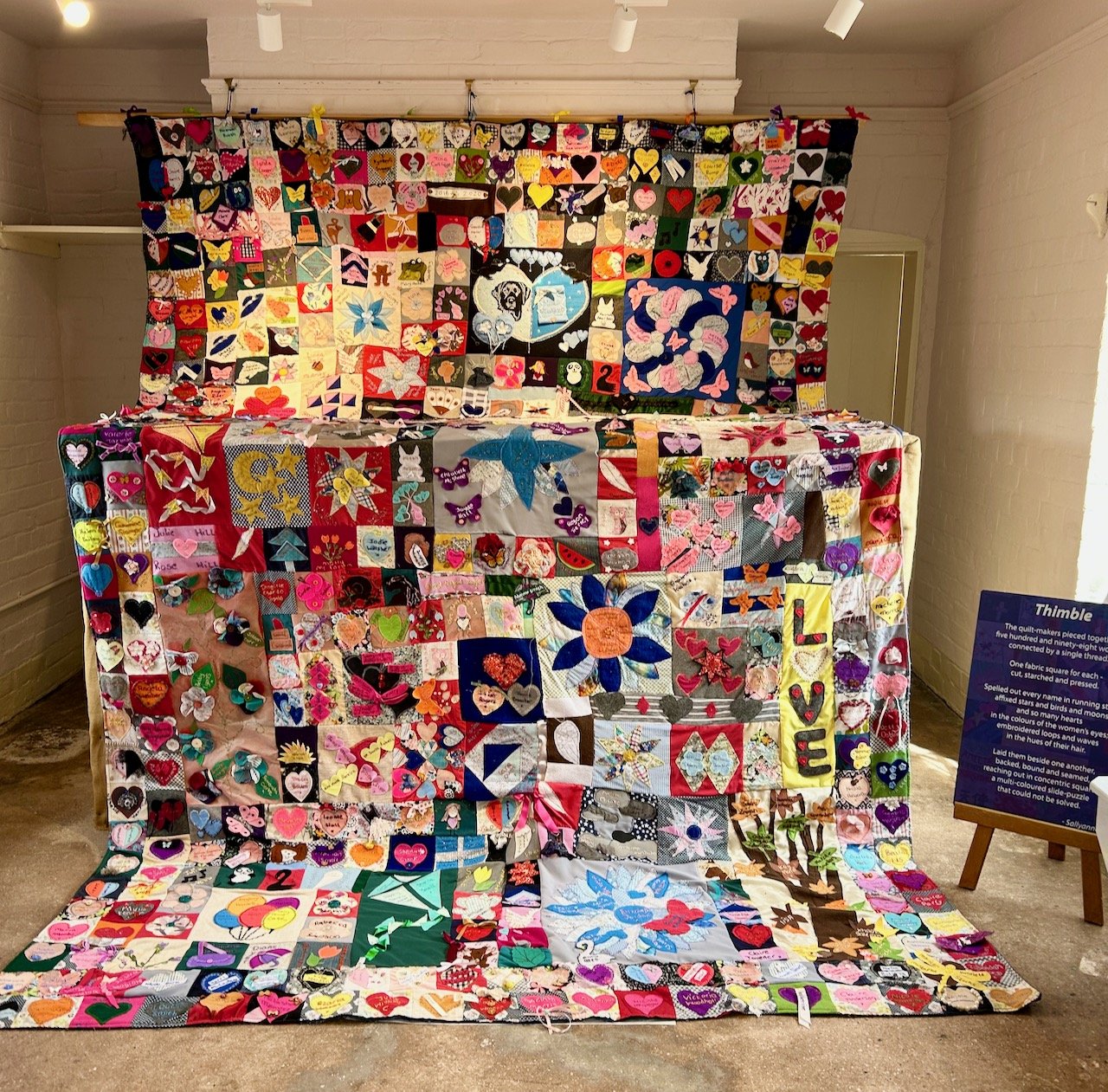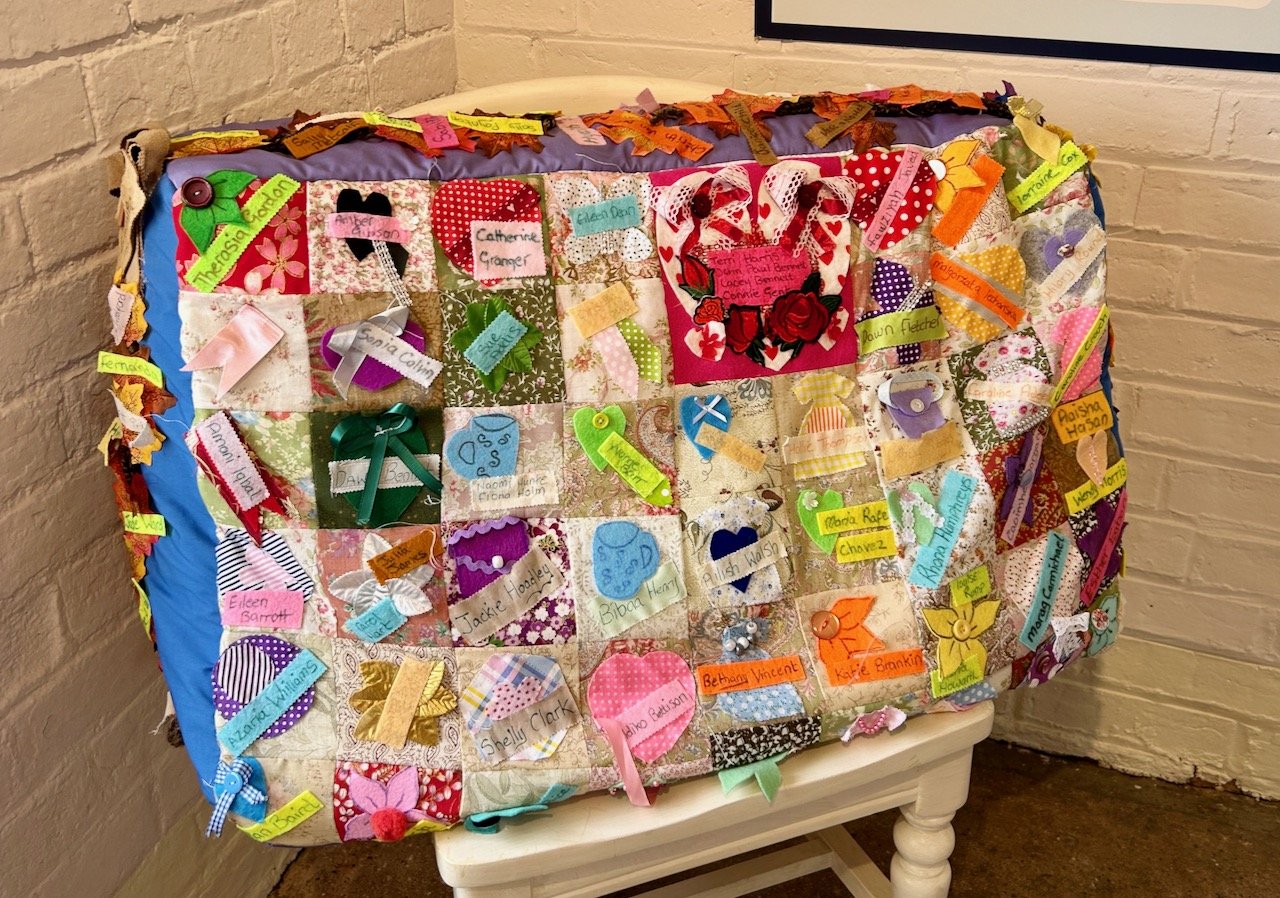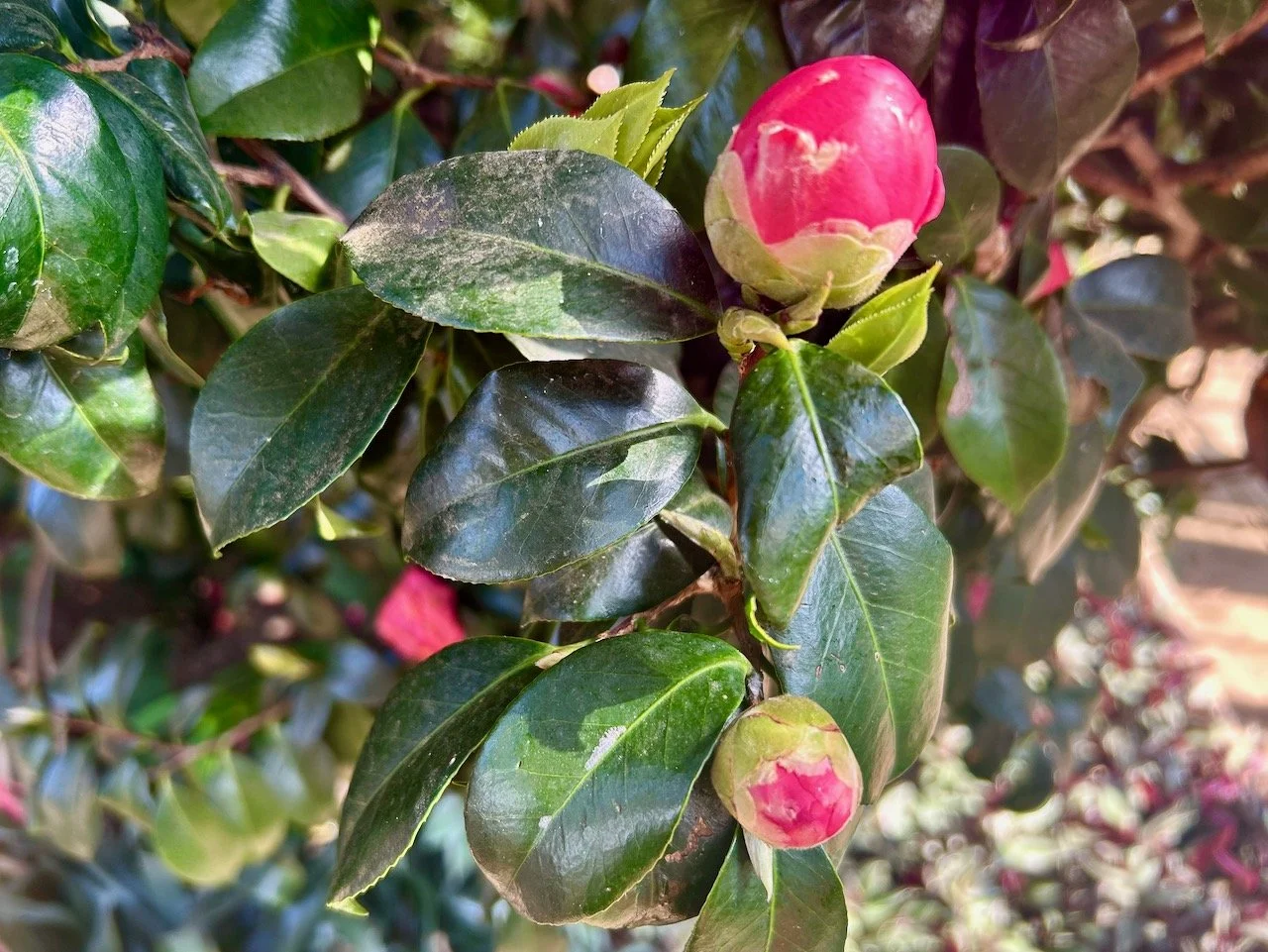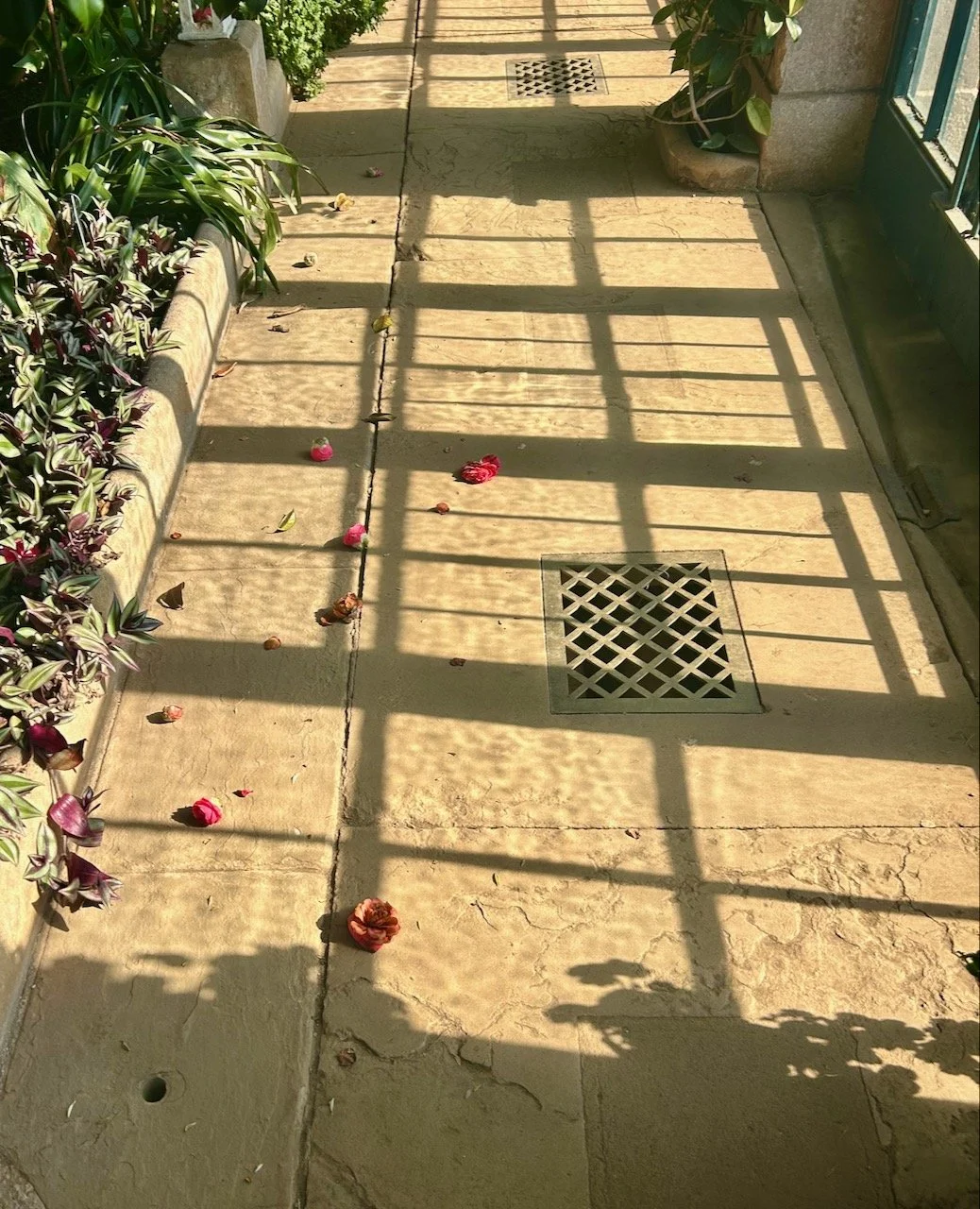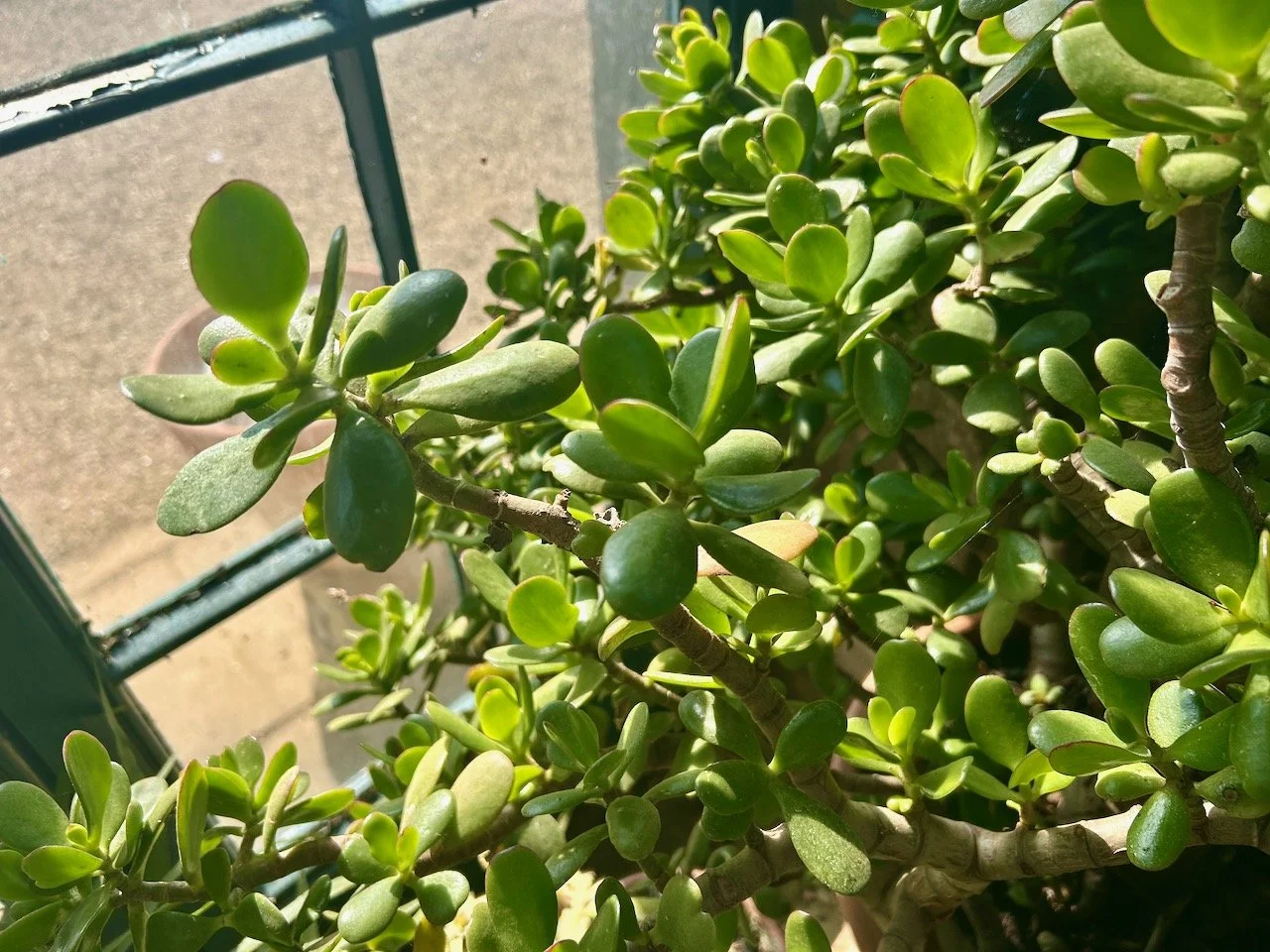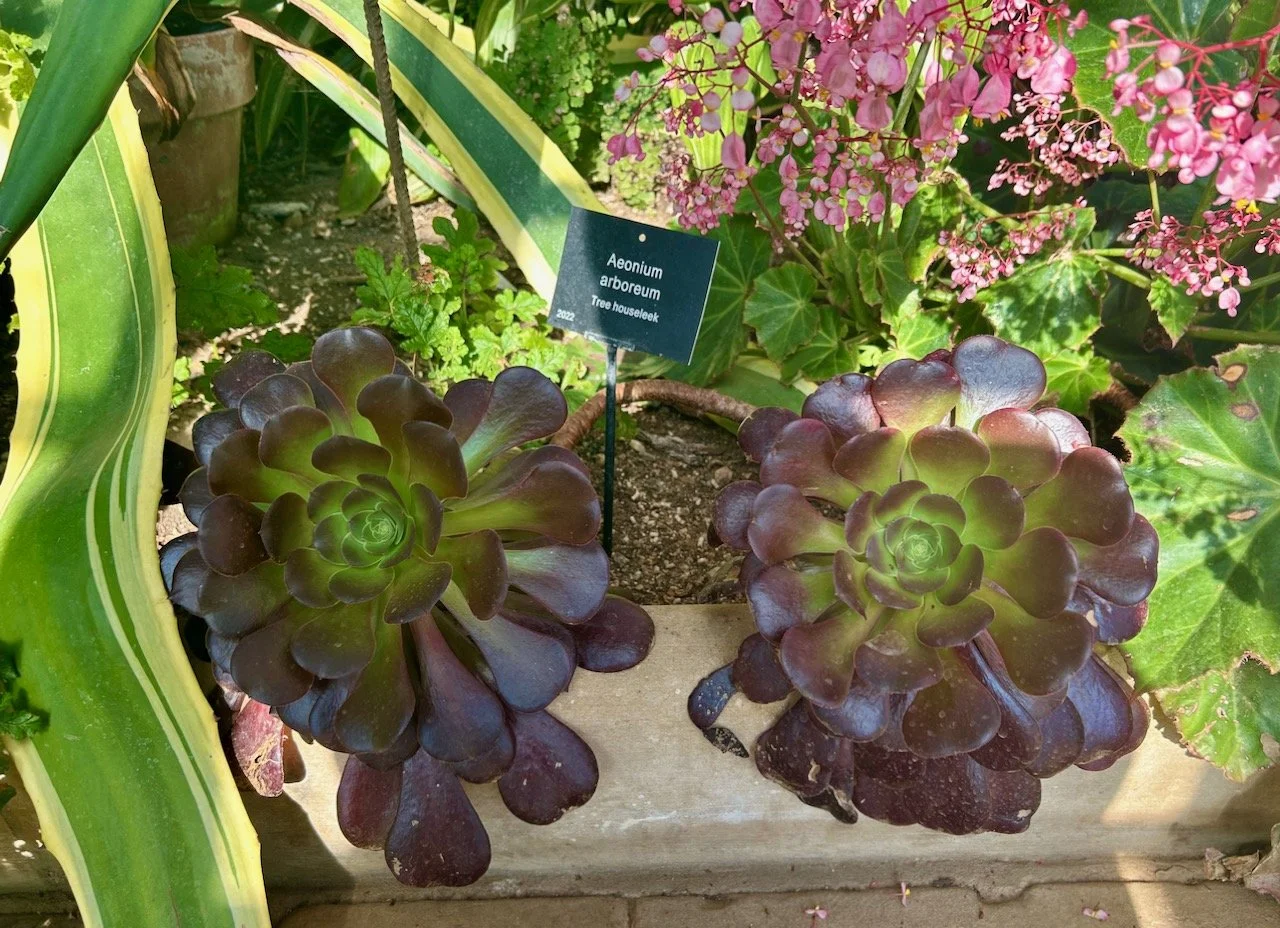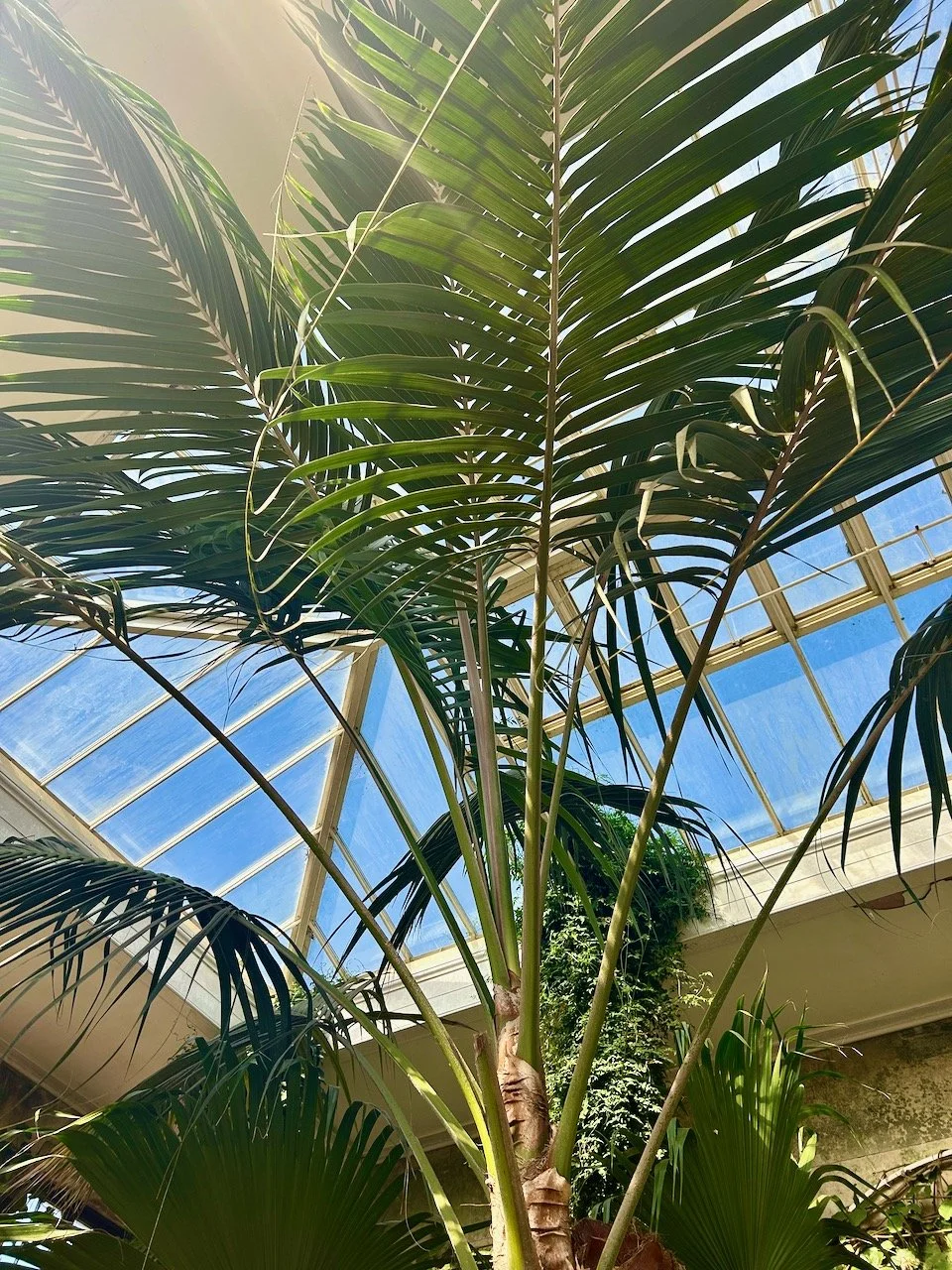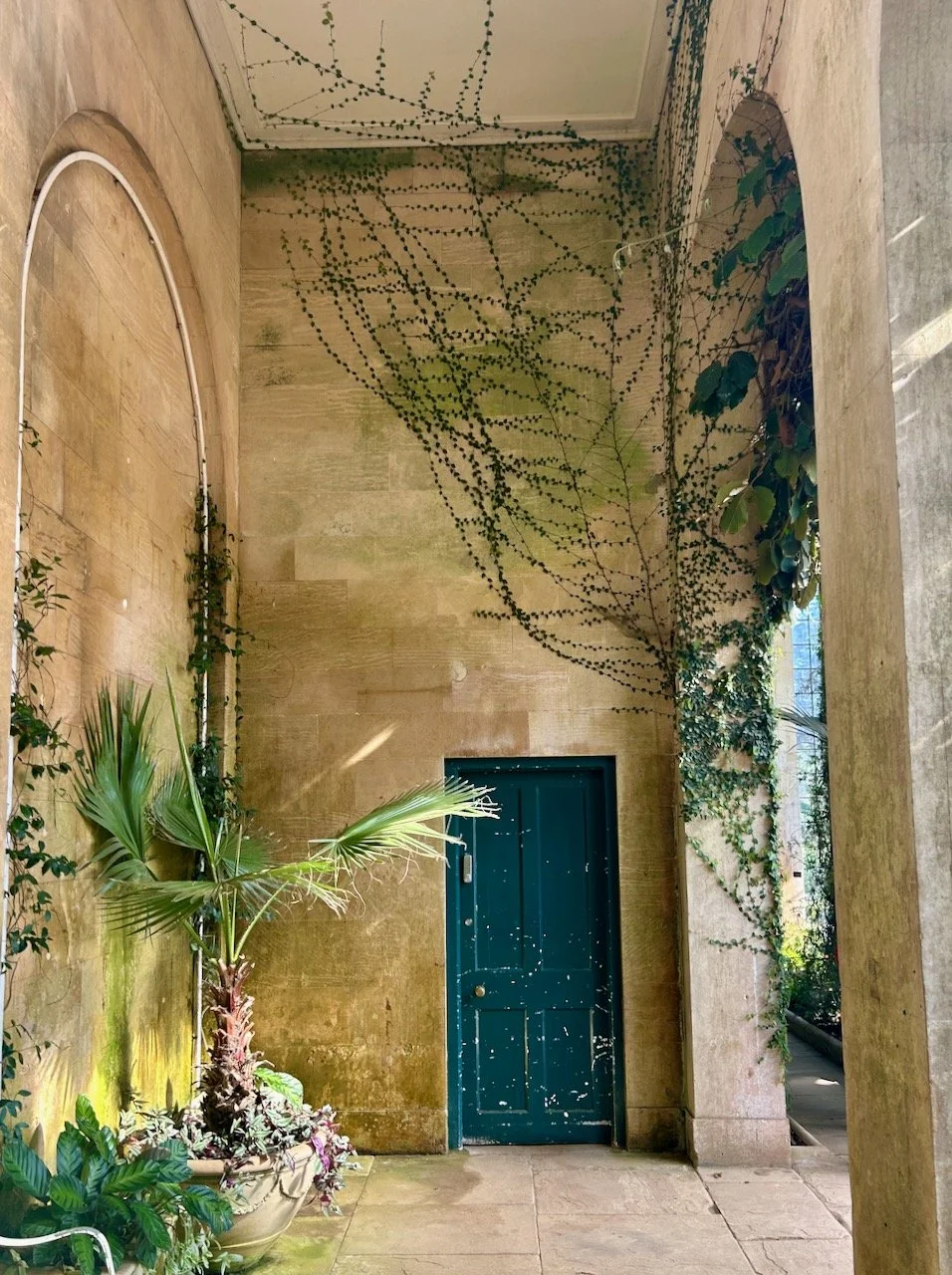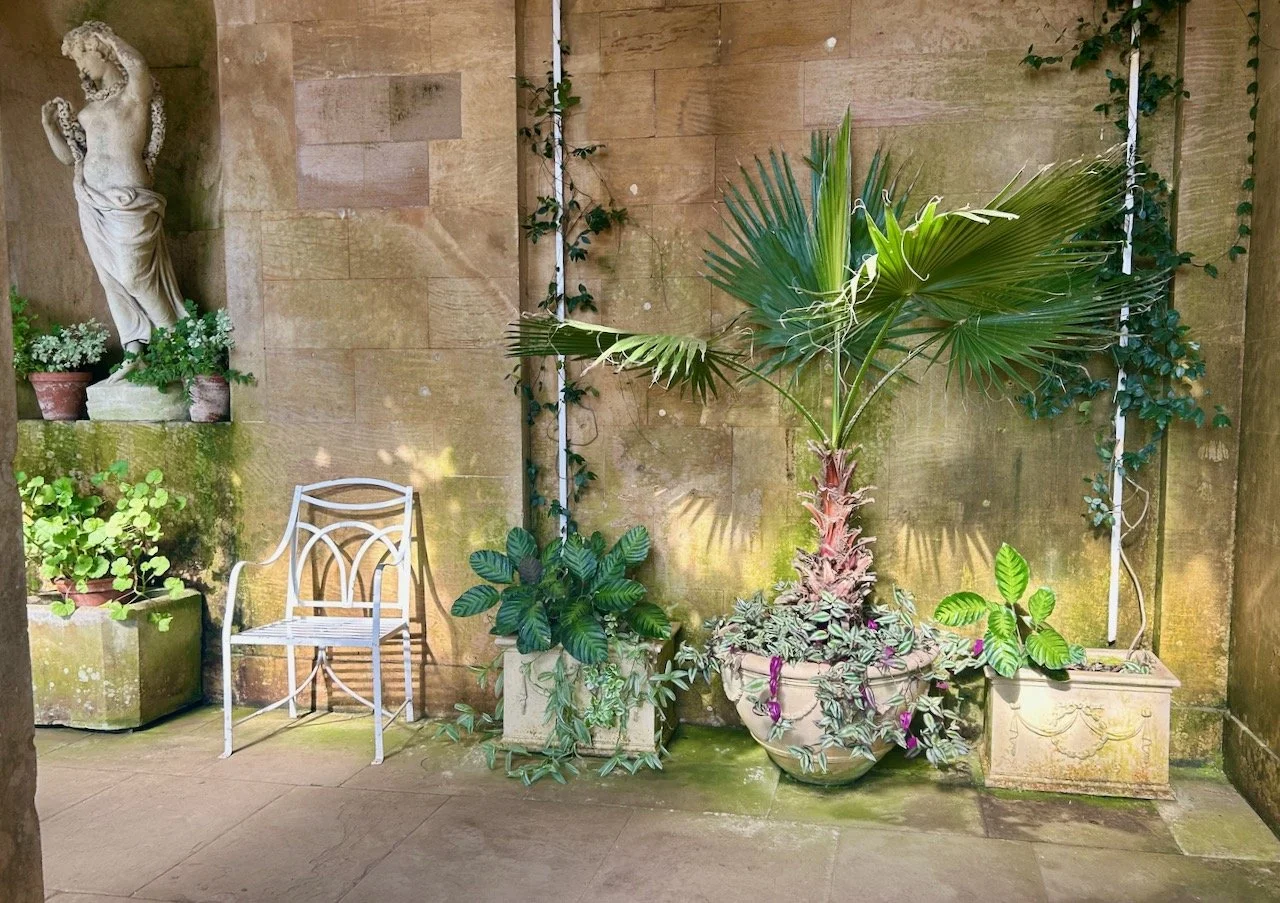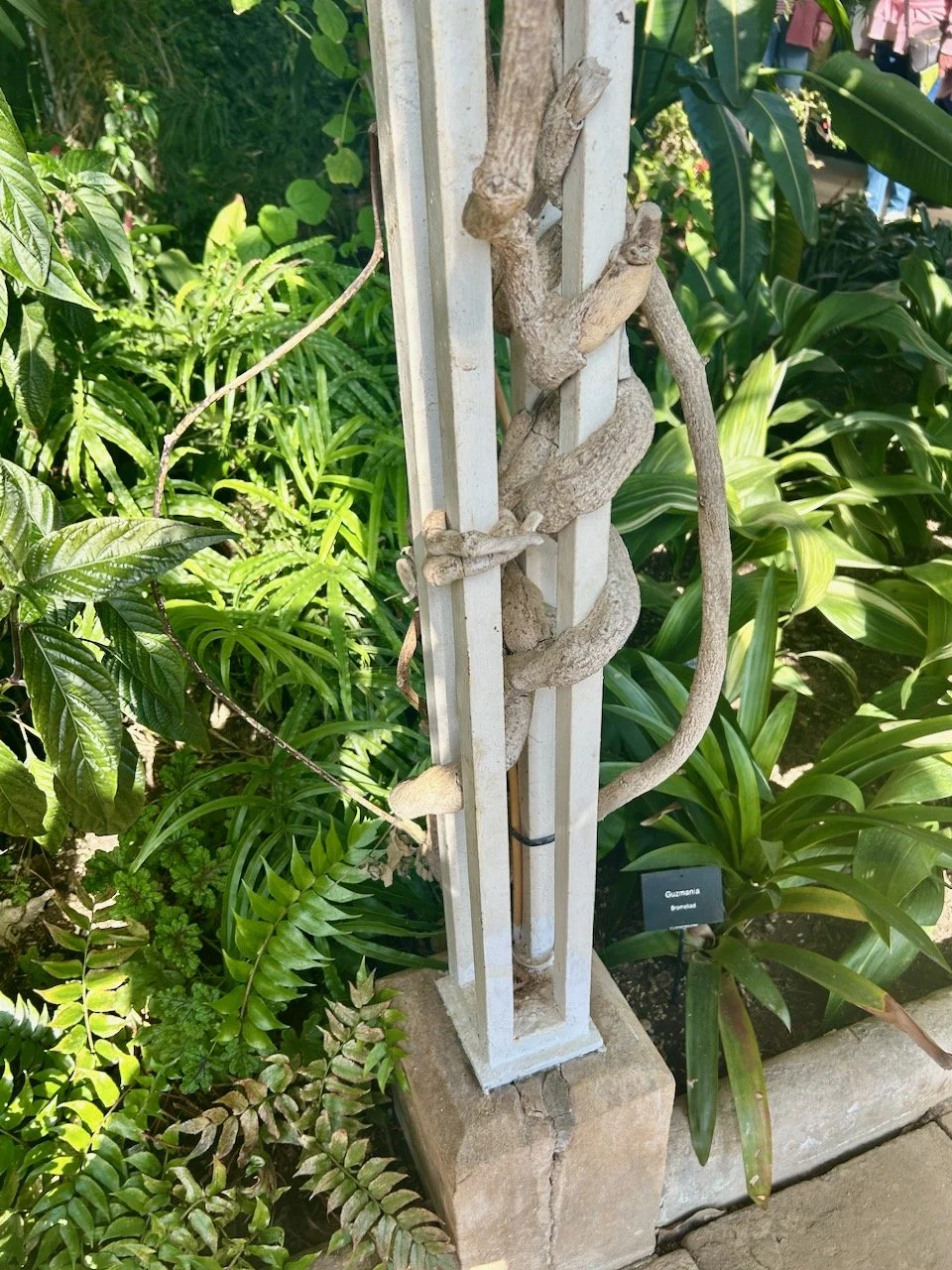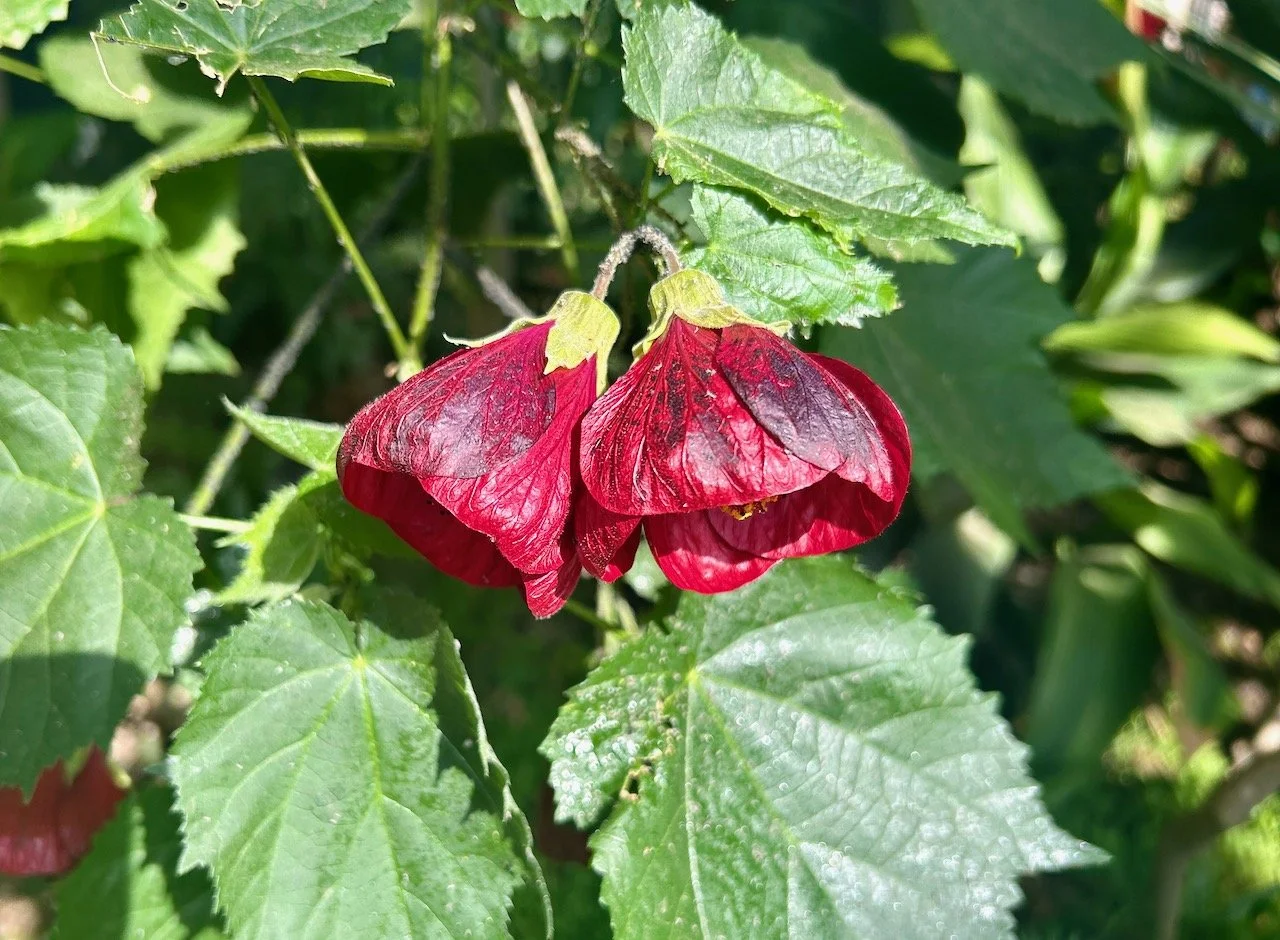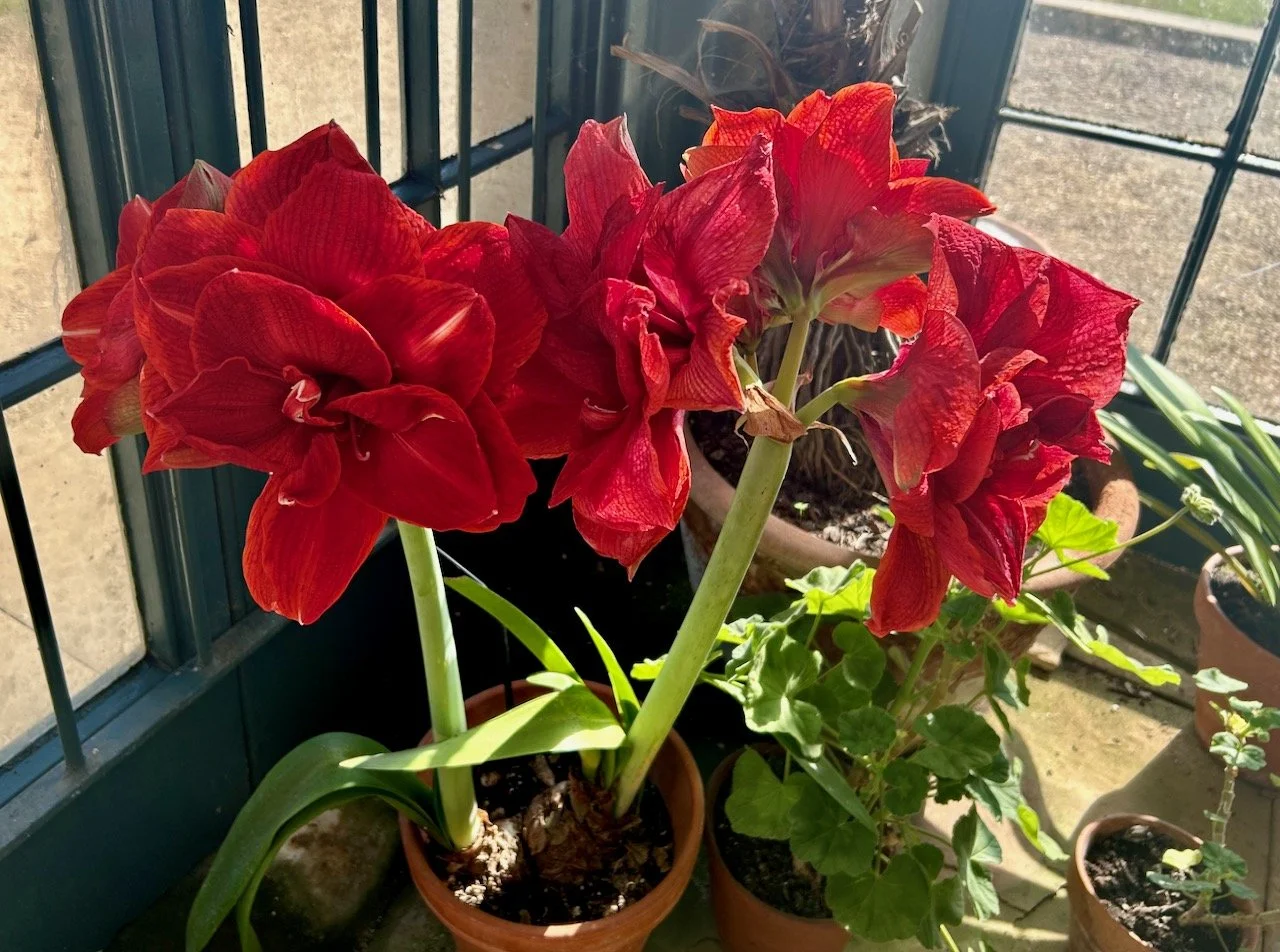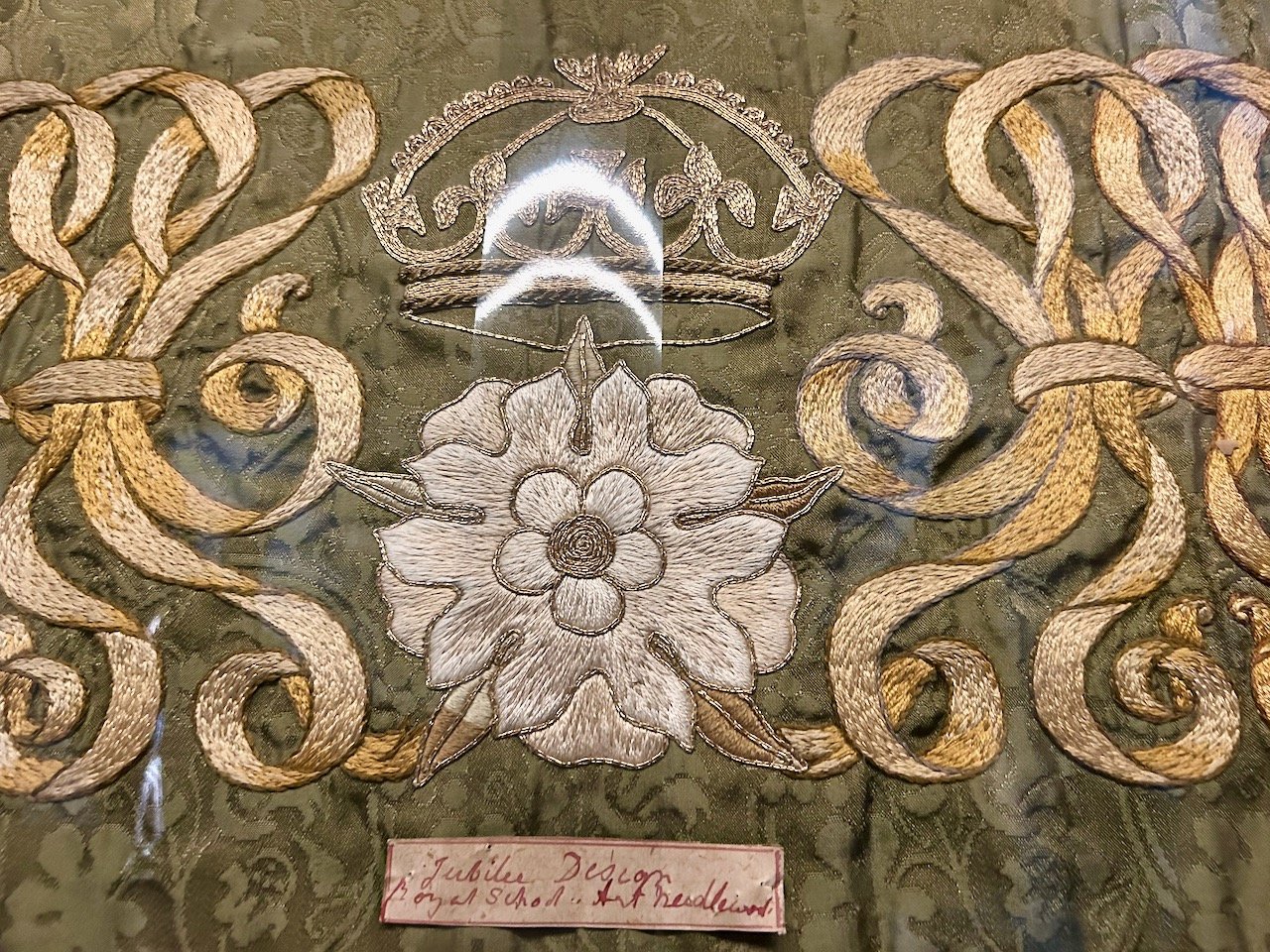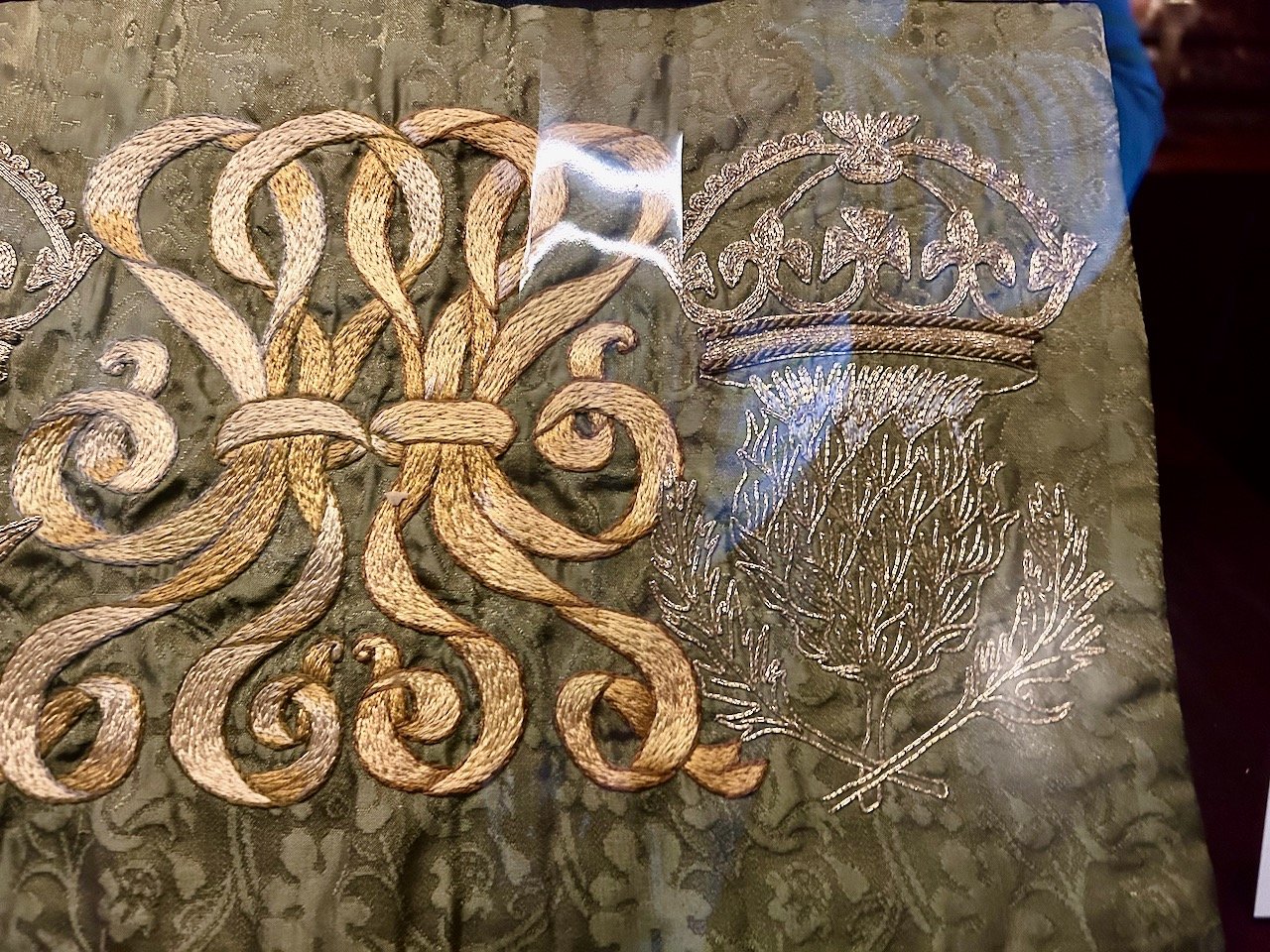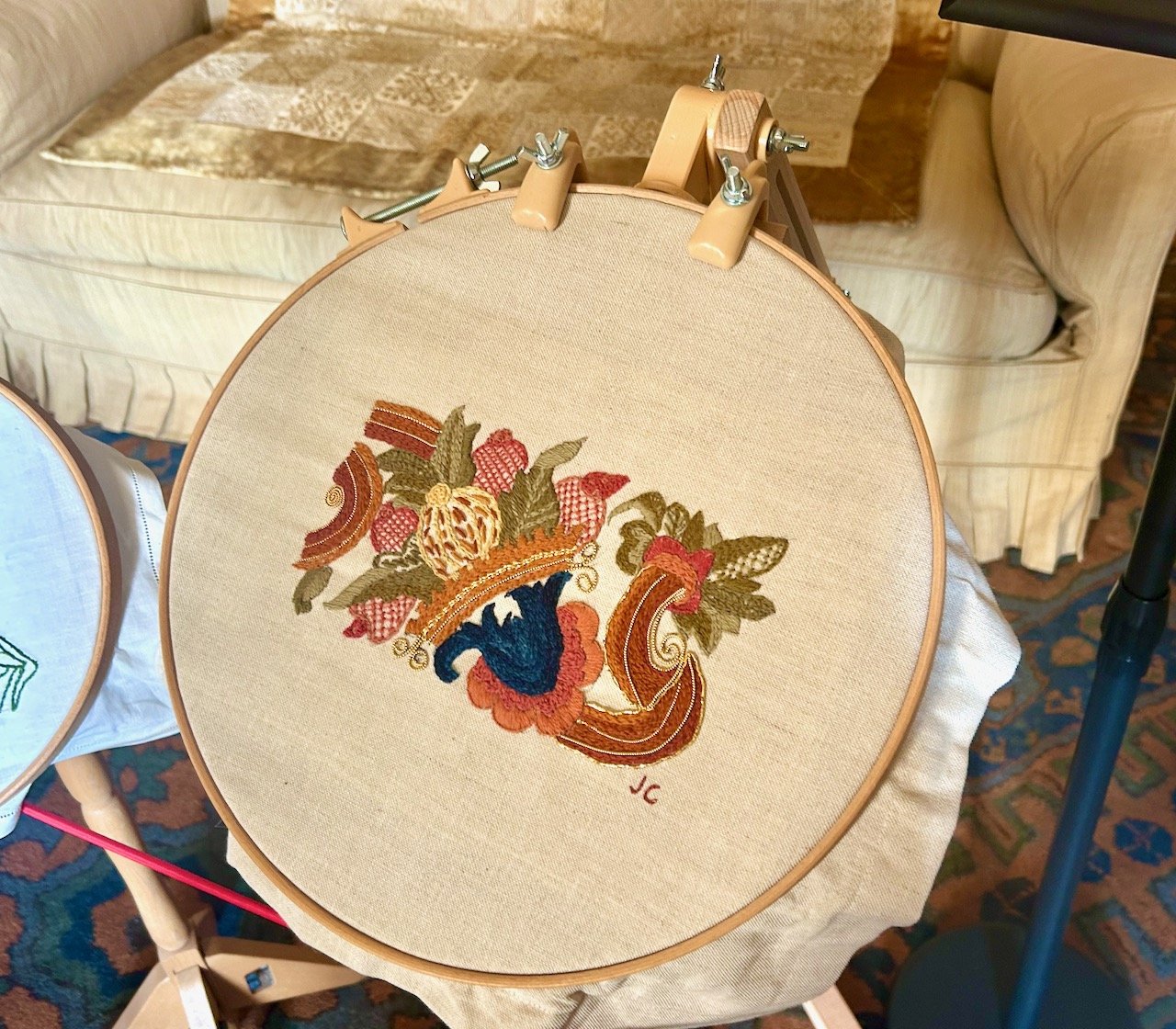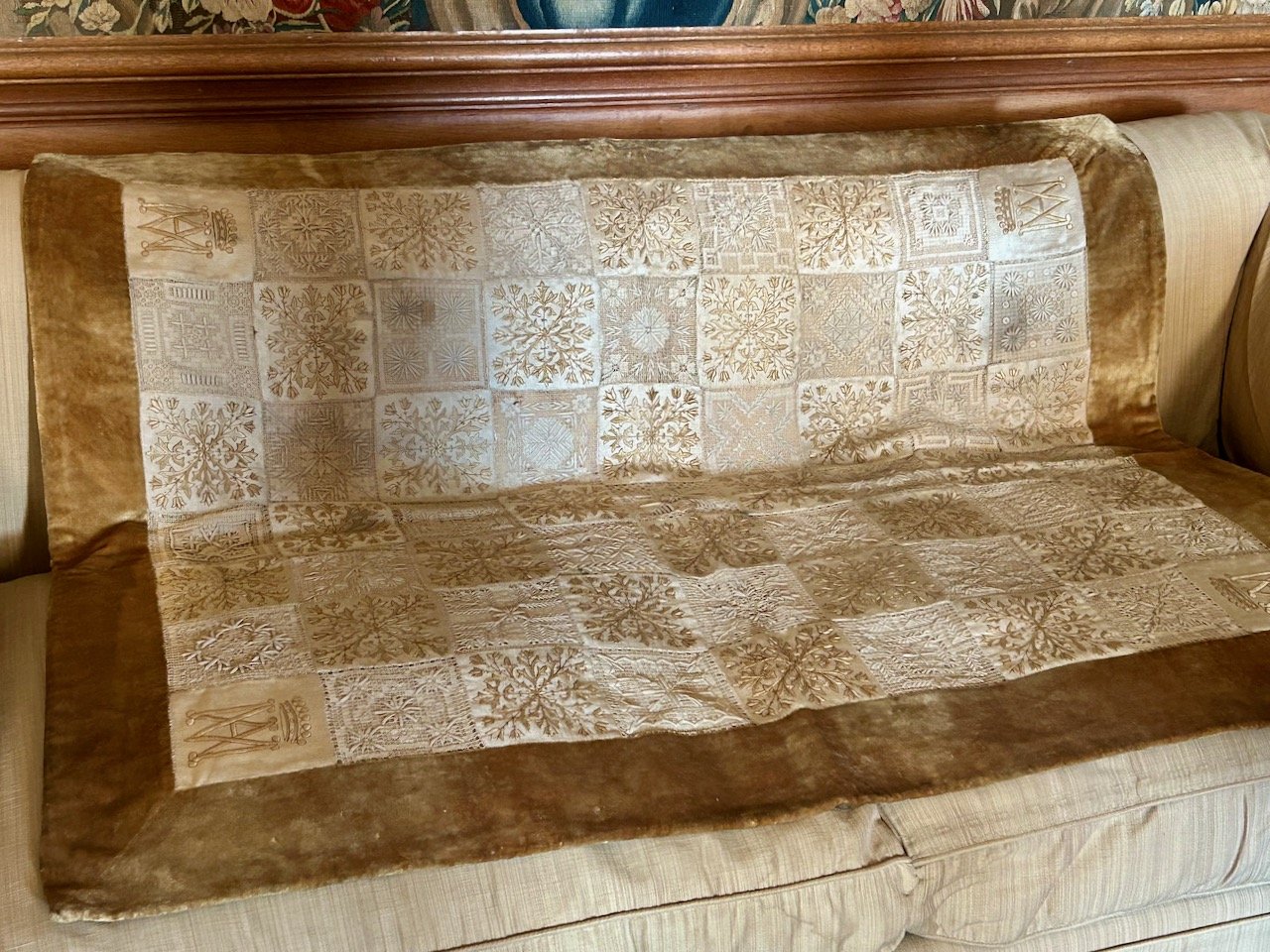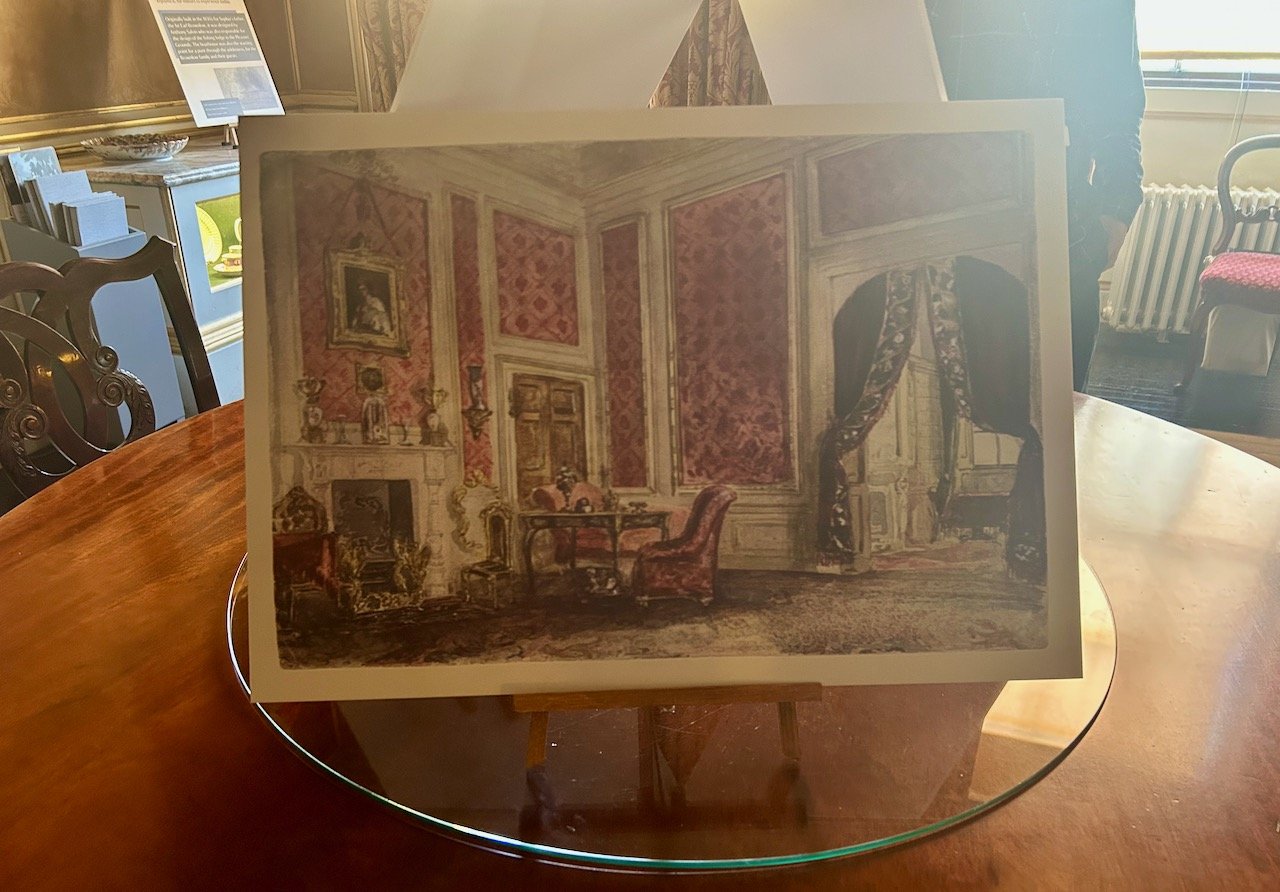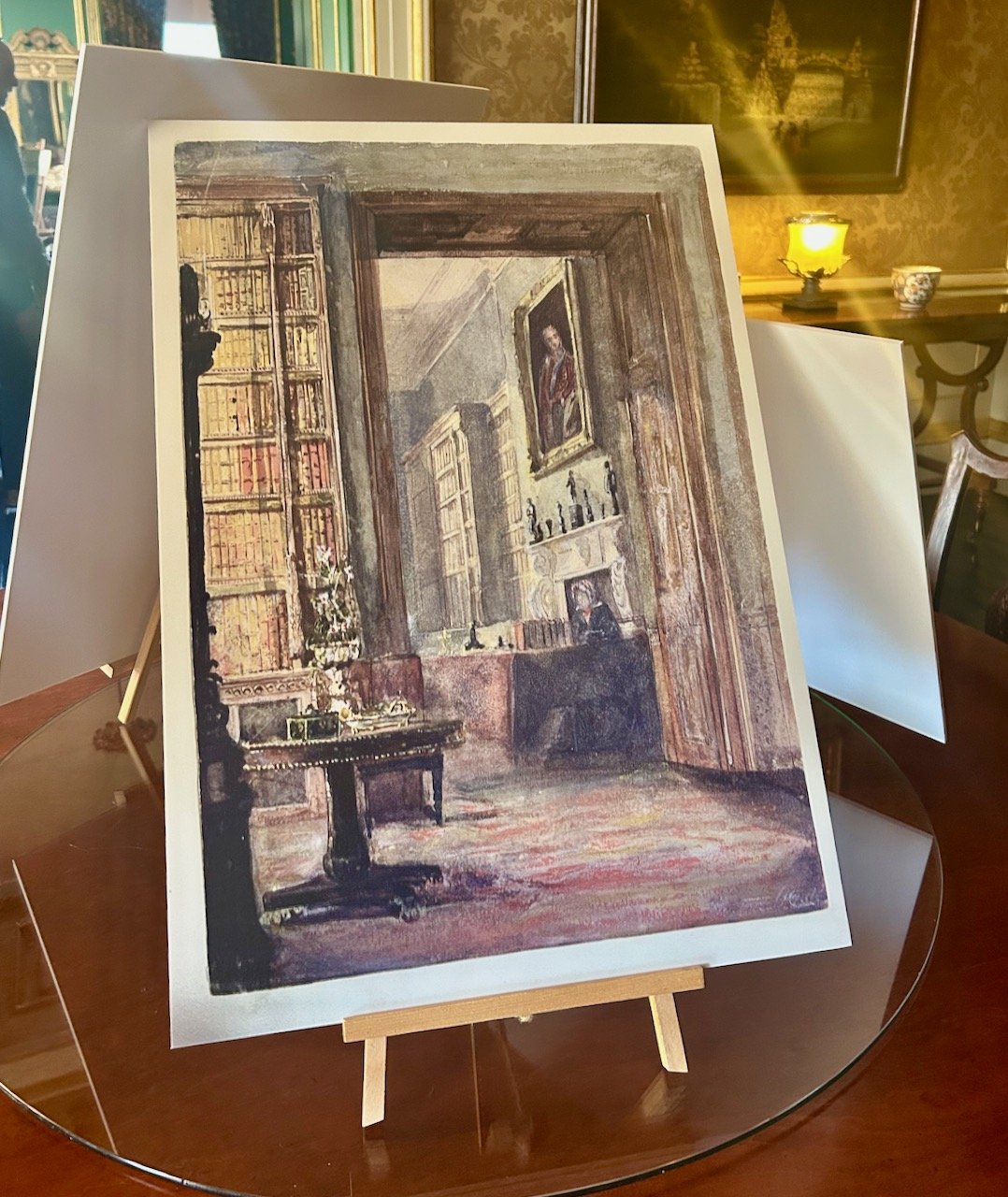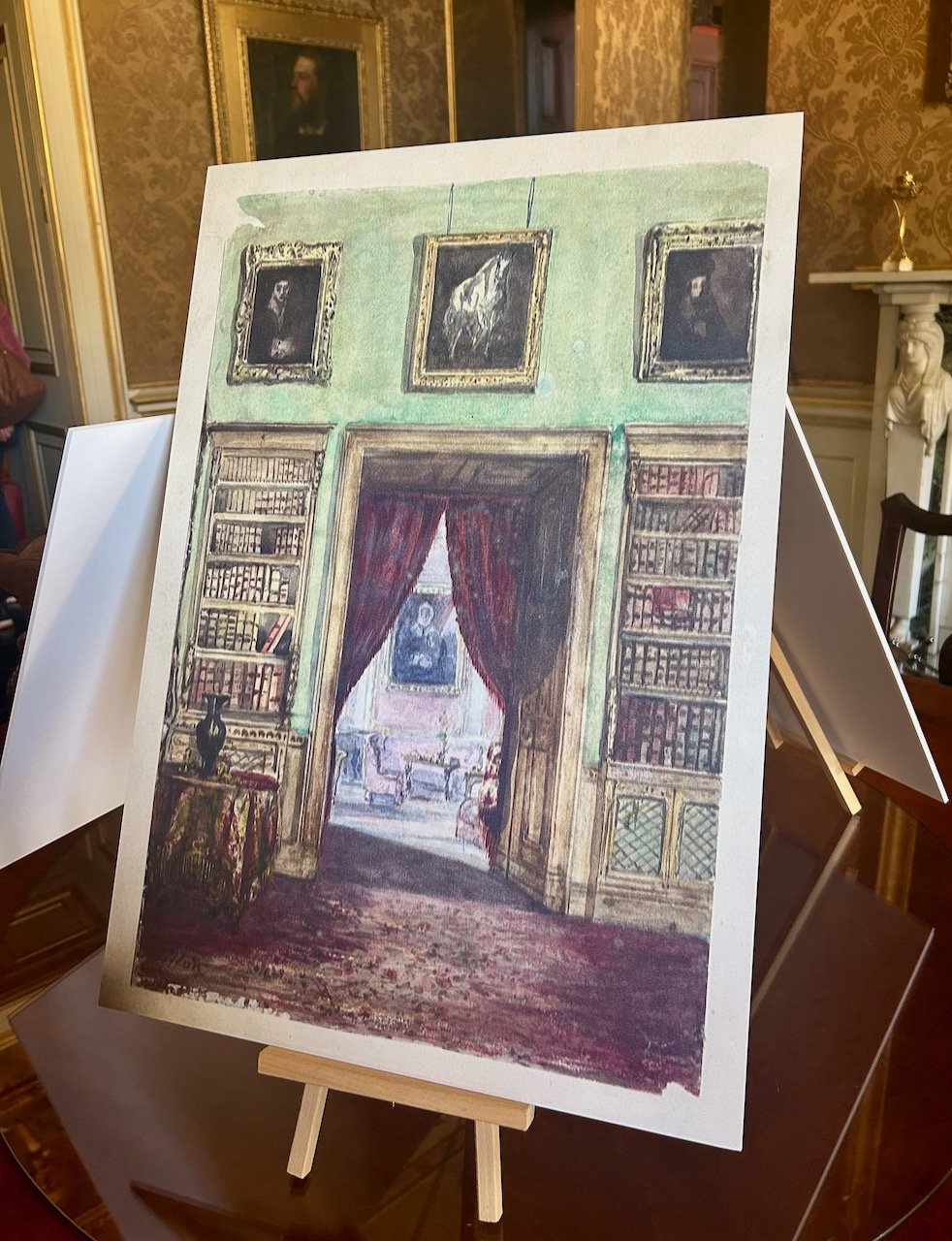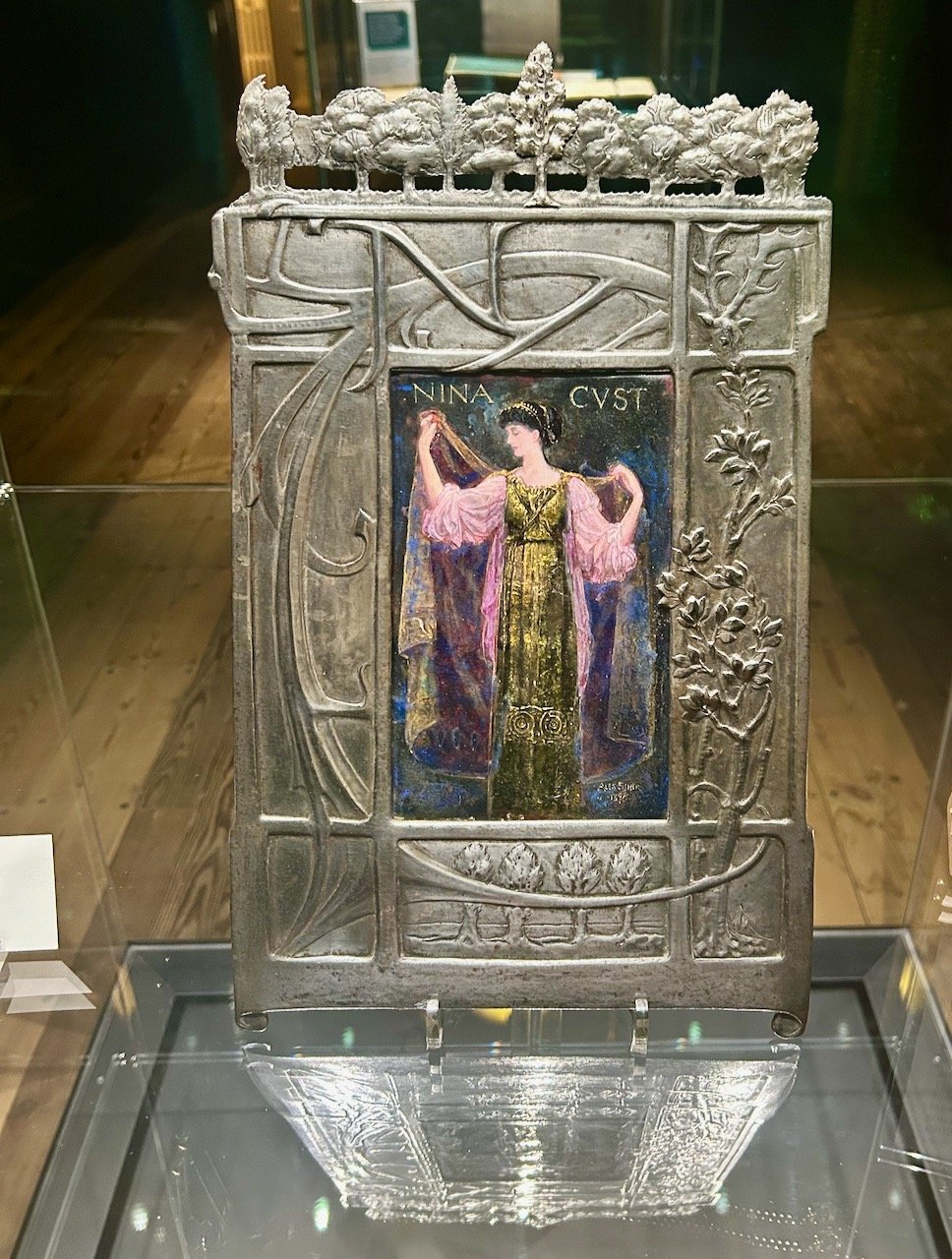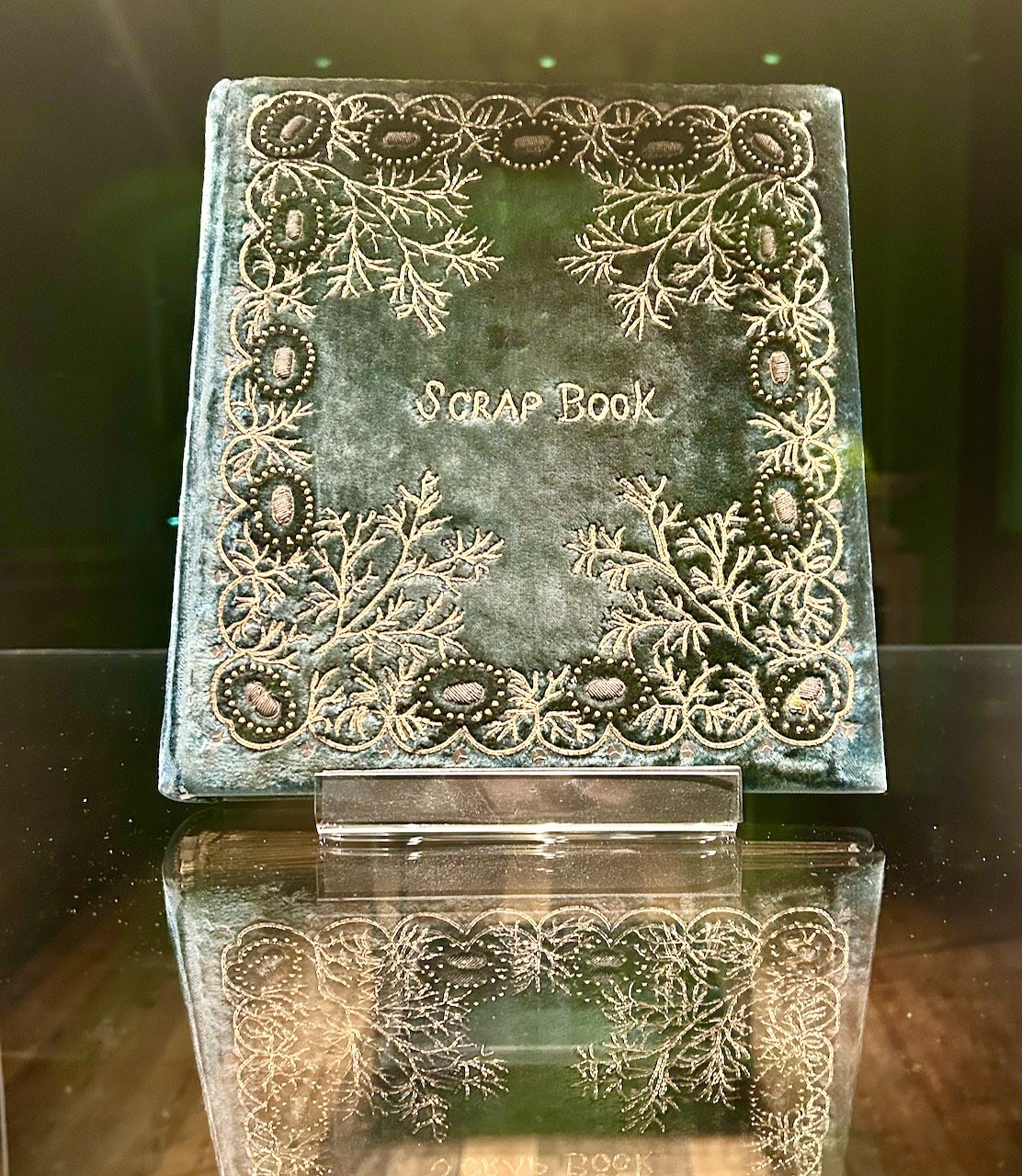Over Easter we visited The Workhouse, a National Trust property in near to us Southwell. It was our first visit to our nearest National Trust property, and it turned out to be a hugely educational visit too. It was unlike other properties that we’d visited owned by the trust, and as you’d expect that was largely down to the original nature of the property.
I may share more about the property and its original use in a future post, and it’s a topic that deserves sharing, but for today I’m sharing some pictures and information about some of the quilts on display.
They too have a story, and are part of a community project highlighting the impact of domestic violence.
The information sheet alongside this first cushion quilt above says that ‘each square commemorates a women who was killed by a current or former partner’ and that there are two further quilts and cushion as part of this project.
That any quilt like this needs to exist is wrong, but it’s not the first commemorative quilt that I’ve seen either, sadly. Each square has been sewn with love and I’m sure fierce determination that these women won’t be forgotten, and the hope that no further quilts are needed.
I am questioning though if this would be more correctly categorised as gender based violence, which is also completely unacceptable. While I don’t know of each case represented in these quilts, I do have some knowledge of Sabina Nessa, who was murdered in Greenwich close to where we used to live. Sabina was killed by a man unknown to her, rather than a current or former partner, who is now serving a life sentence for her murder.
The Leighann Wightman quilt above is a tribute to her by her stepmother who wanted to use her time during lockdown to create a quilt as a tribute to women who lost their lives to domestic violence from 2016-2020.
The two cushions on display, made later, represent the women who lost their lives between 2020 and 2022.
The quilt below - The Women’s Quilt - pieces together five hundred and ninety-eight women each of whom were connected by a single thread. Every name is included, along with stars, birds, moons and hearts; their names are stitched in the colours of their eyes, the embroidered loops and waves in the hues of their hair. The poignancy in this detail was hard to miss.
All of the exhibits on show were humbling, and a sober reminder of the world we live in today, and as one of the exhibition boards said ‘the most beautiful project that shouldn’t exist’.

